
Smarter email, faster business.
Auto-tag, parse, and respond to RFQs, quotes, orders, and more — instantly.
Trending
Categories
Aviation News. Powered by AI.
Verified by ePlane AI
AI fact-checks every story before it goes live.
Latest News
Trending News

Aviation Expert Richard Godfrey Attributes AI 171 Crash to RAT Deployment, Rules Out Pilot Error
Aviation Expert Richard Godfrey Attributes AI 171 Crash to RAT Deployment, Rules Out Pilot Error
Aviation expert Richard Godfrey has identified the automatic deployment of the Ram Air Turbine (RAT) as the primary cause of the Air India Flight 171 crash in Ahmedabad on June 12, dismissing widespread speculation that pilot error was to blame. In an interview with Geoffrey Thomas, Godfrey examined preliminary findings and data released by the Air Accident Investigation Bureau (AAIB) a month after the London-bound aircraft crashed, resulting in the deaths of all but one passenger.
Timeline and Key Findings
The AAIB’s preliminary report outlines a rapid sequence of events on the day of the crash. At 1:13 pm, the aircraft requested pushback and startup clearance, followed by Air Traffic Control (ATC) confirming the need for the full length of Runway 23 at 1:19 pm. Taxi clearance was granted at 1:25 pm, and by 1:33 pm, AI 171 was instructed to line up for takeoff. The flight was cleared for takeoff at 1:37 pm, but just two minutes after liftoff, the pilots issued a MAYDAY call before the aircraft crashed seconds later.
The report highlights that both engines shut down within one second of each other after the fuel supply was cut off. Cockpit voice recordings captured one pilot questioning the other about the engine shutdown, with the second pilot denying any action to cut the engines. Examination of the engines recovered from the crash site revealed they were in the “Run” position, and attempts had been made to relight them.
RAT Deployment and Technical Analysis
Godfrey’s detailed analysis, drawing on the preliminary report, flight data, and airport CCTV footage, revealed that the RAT was automatically deployed at approximately 1:38:47 pm. According to the data, both engines’ N2 values dropped below minimum idle speed at this time, triggering the RAT hydraulic pump to supply hydraulic power. The preliminary report included an image showing the RAT in its extended position but did not clarify the timing or cause of its deployment.
By synchronizing multiple data sources—including the flight data recorder (FDR) and ATC logs—Godfrey established that the RAT deployment occurred mere seconds before the crash. This timing strongly suggests a technical malfunction rather than any human intervention.
Conflicting Interpretations and Ongoing Investigation
Despite Godfrey’s findings, the investigation has been marked by conflicting interpretations. Some experts, including Captain Byron Bailey, have proposed the possibility of deliberate pilot action, even suggesting “suicide by the pilot” as a theory. However, Godfrey’s analysis, supported by the available data, firmly disputes this notion, attributing the crash to a technical failure centered on the RAT deployment.
In response to the incident, the U.S. Federal Aviation Administration (FAA) and Boeing reviewed the safety of fuel cutoff switch locks, which had come under scrutiny during the investigation. Both organizations have since affirmed the safety of these components.
The investigation into the AI 171 crash remains ongoing, with authorities yet to issue a definitive conclusion. For now, Godfrey’s assessment shifts the focus away from pilot error, underscoring the critical role of the RAT deployment in the tragic sequence of events.

AAMG Seeks to Acquire Lilium’s Assets and Expertise
AAMG Moves to Acquire Lilium’s Assets and Expertise
The Ambitious Air Mobility Group (AAMG) has announced its intention to acquire the intellectual property, assets, and testing facilities of Lilium, alongside retaining key technical and certification personnel. This proposed acquisition is aimed at advancing the development and certification of Lilium’s aircraft platform, with plans to establish a European supply chain to support future production should the deal be finalized.
Strategic Investment and Development Plans
Prior to Lilium entering insolvency proceedings, AAMG had already placed an order for 16 of the company’s aircraft and is now positioning itself to revive the enterprise. The group has declared it holds over €250 million in capital dedicated to this initiative, with potential access to an additional €500 million intended to support expansion efforts across Europe and internationally.
Dr. Robert Kamp, CEO and Senior Partner of AAMG, emphasized the significance of the technology developed in Bavaria, describing it as both groundbreaking and economically viable. He highlighted the platform as the culmination of years of work by some of the world’s most talented engineers and expressed enthusiasm about the opportunity to invest in and fully realize its potential.
Collaboration and Market Expansion
AAMG plans to work closely with a wide network of suppliers, regulatory bodies, and government partners to facilitate the integration and growth of Lilium’s technology. The group has also established a partnership with Japan’s AirMobility Inc., aiming to extend its reach into Asia-Pacific markets and coordinate international development efforts.
Challenges and Market Implications
Despite the promising outlook, the acquisition faces several challenges. Regulatory scrutiny is expected due to the complexity of integrating advanced aviation technologies and the necessity of certification across multiple jurisdictions. The process of merging Lilium’s expertise and assets with AAMG’s existing operations may present operational difficulties. Furthermore, competitors in the air mobility sector may respond with strategic initiatives such as forming new alliances or accelerating their own research and development programs.
Investor reaction will likely depend on perceptions of the strategic alignment and financial impact of the acquisition on AAMG. While the company’s substantial capital reserves and international ambitions provide a strong foundation, the ultimate success will depend on navigating regulatory, operational, and competitive challenges effectively.
Details regarding the sources of AAMG’s funding have not been disclosed. Nevertheless, the company’s international partnerships and expansion plans indicate a broader strategy to establish a leading position in the rapidly evolving air mobility market.
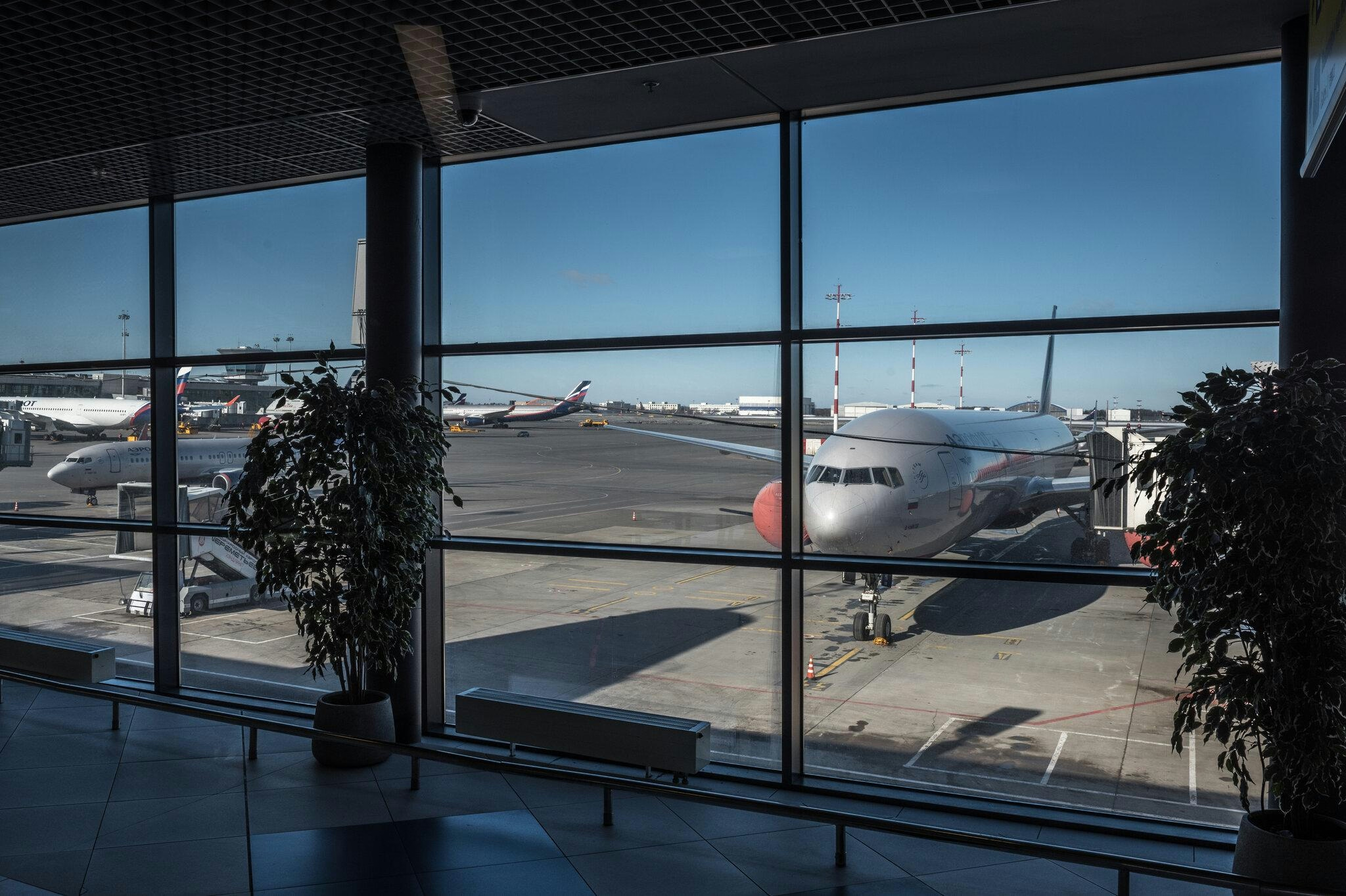
Leasing Firms Face Significant Losses After Chinese-Owned Aircraft Detained in Russia
Leasing Firms Face Significant Losses After Chinese-Owned Aircraft Detained in Russia
Rising Financial Strains Amid Geopolitical Tensions
Chinese aircraft leasing companies are confronting significant financial setbacks as a consequence of the ongoing conflict in Ukraine. Several firms have reported substantial insurance claims following the detention of their aircraft in Russia, where the planes remain unrecovered. This predicament underscores the escalating political risks confronting the global aircraft leasing industry amid intensifying geopolitical tensions.
AVMAX, a wholly owned subsidiary of Guangdong-based Shanhe Intelligent, recently revealed it had secured US$23 million in insurance payouts for three turboprop airliners stranded in Russia. According to a stock exchange filing released this week, these aircraft—manufactured by De Havilland Canada, a Bombardier subsidiary—were leased to Russian carriers Yakutia Airlines and Aurora JSC under three separate contracts, two of which expired last year. Since the outbreak of the Ukraine war in February 2022, AVMAX has persistently sought to recover the planes, but Western sanctions targeting the Russian aviation sector have severely complicated negotiations. The company stated that despite ongoing efforts, it has been unable to reclaim the affected aircraft.
Broader Industry Impact and Financial Fallout
The difficulties encountered by AVMAX reflect a wider trend affecting Chinese leasing firms. Airwork, a wholly owned subsidiary of a Zhejiang-based company, experienced the detention of six Boeing 757 freighter aircraft in Russia after it demanded the termination of leasing contracts and the return of its planes in 2022. While Airwork succeeded in recovering one aircraft, it suffered losses amounting to hundreds of millions of dollars. The company was compelled to write off the value of the remaining assets and engage in protracted insurance litigation.
The financial repercussions extend beyond Chinese firms. Air Lease, a prominent international competitor, reported a $344 million insurance claim settlement related to aircraft blocked in Russia since the invasion of Ukraine in 2022. These developments have intensified scrutiny of political risk insurance and raised concerns about the stability of aircraft leasing arrangements in regions affected by geopolitical conflict.
Strategic Reassessment in a Volatile Environment
In light of these challenges, leasing companies are reassessing their business strategies to better manage risks associated with international political disputes. Industry analysts observe that the wave of detained aircraft and ensuing insurance claims is prompting firms to reevaluate their exposure to high-risk markets and reconsider how future leasing agreements are structured.
As the conflict in Ukraine persists, the aircraft leasing sector remains enveloped in uncertainty, with companies preparing for further disruptions and potential losses linked to assets stranded in Russia.
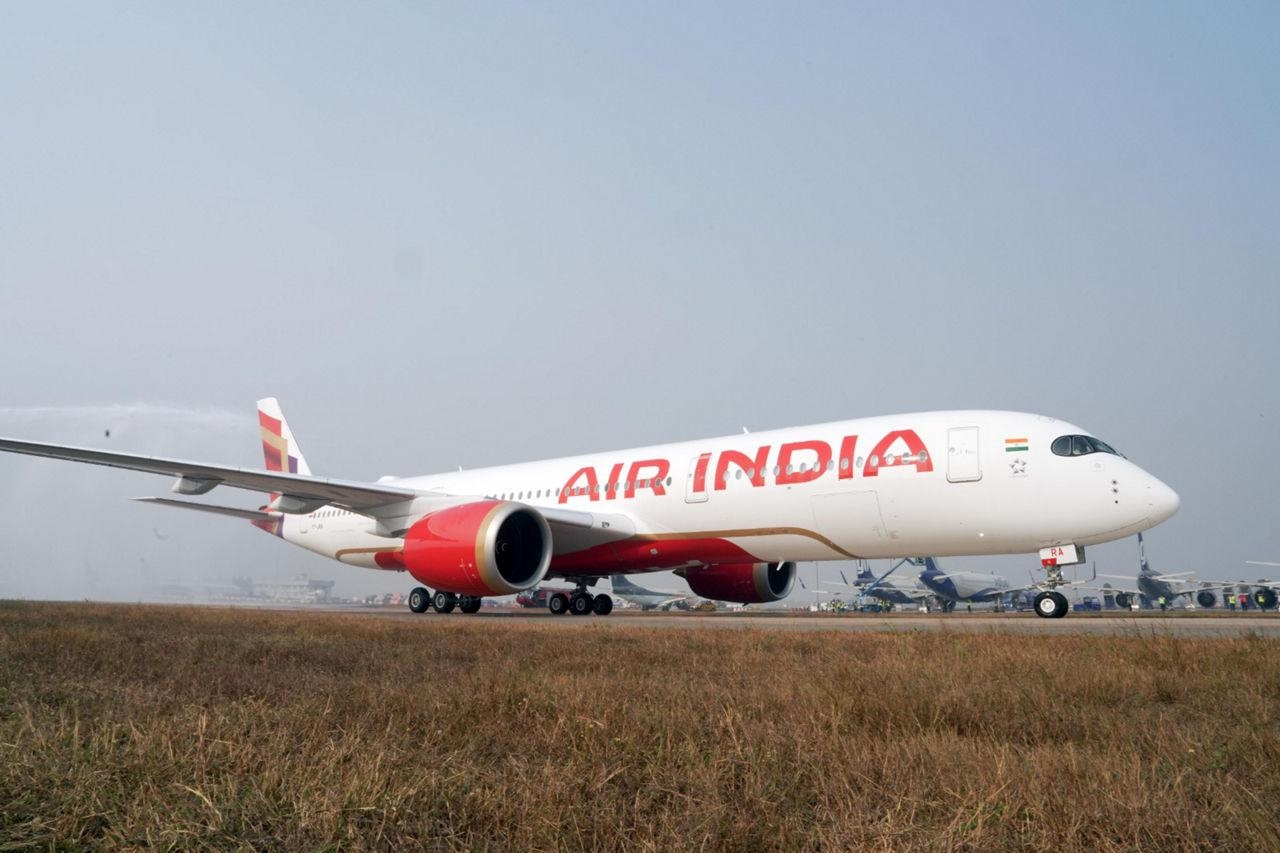
Air India Announces Delivery Schedule for A321neo, A350-1000, and 787-9 Aircraft
Air India Announces Delivery Schedule for A321neo, A350-1000, and 787-9 Aircraft
Major Fleet Modernization Underway
Air India Group, now under the ownership of the Tata Group, is advancing a landmark fleet renewal initiative that promises to transform its operational capabilities and competitive positioning within the Indian aviation sector. Central to this effort is an unprecedented order of 570 aircraft, among the largest in the history of commercial aviation. This extensive acquisition includes the latest models from Airbus and Boeing, notably the A321neo, A350-1000, 787-9 Dreamliner, and 777-9. These additions are expected to significantly expand Air India’s capacity and modernize its fleet.
Delivery Timeline and Deployment Plans
To date, the Air India Group—which comprises both Air India (AI) and Air India Express (IX)—has taken delivery of six Airbus A350-900s alongside more than 40 Boeing 737 MAX aircraft. The next phase of this fleet expansion is scheduled to commence in mid-2025, with the introduction of the first A321neo, A350-1000, and 787-9 Dreamliner aircraft. This phase represents a critical step in the airline’s strategy to increase capacity and enhance service offerings.
Air India Express will be the initial operator of the new A321neo, launching scheduled services from April 15, 2025. The inaugural routes will connect Delhi (DEL) with Bengaluru (BLR) and Srinagar (SXR), with subsequent expansions on April 20 to include Ayodhya (AYJ) and Jaipur (JAI). The A321neo will be configured with 180 economy seats and 12 business class seats, providing improved passenger options on key domestic routes. Currently, Air India operates two A321neos (registrations VT-RTC and VT-RTD) in a 192-seat dual-class layout.
Supply Chain Challenges and Operational Adjustments
Despite the progress, Air India continues to grapple with significant supply chain disruptions. CEO Campbell Wilson has acknowledged ongoing difficulties in procuring essential components such as engines, fuselages, and premium cabin seats. These challenges are expected to cause delivery delays from both Airbus and Boeing, potentially affecting the airline’s growth trajectory for the next four to five years. In response, Air India is extending the operational lifespan of older aircraft, which entails increased maintenance costs, and is facing obstacles in leasing additional planes due to global shortages. The airline is also exercising prudence regarding further Boeing orders amid manufacturing and regulatory constraints.
Widebody Fleet Expansion: A350-1000 and 787-9
The first A350-1000 destined for Air India is nearing completion at Airbus’s Toulouse facility and is anticipated to be delivered in 2026. Currently registered as F-WZFI, the aircraft will soon be re-registered under the VT-series for Indian operations. Concurrently, the initial Boeing 787-9 Dreamliners from the 2023 order are expected to arrive by the end of 2025. Three 787-9s are presently in production at Boeing’s Charleston, South Carolina plant, equipped with General Electric GEnx-1B engines.
Order Composition and Market Implications
Air India’s comprehensive 570-aircraft order includes 20 A350-900s, 20 A350-1000s, 140 A320neos, and 70 A321neos from Airbus, alongside 20 787-9 Dreamliners, 10 777X, and 190 737-8 MAX aircraft from Boeing. Additionally, a 2024 order comprises 10 more A350s and 90 A320 Family aircraft. This sweeping modernization is anticipated to provoke strategic responses from rival carriers, who may reassess their fleet plans in light of Air India’s expanded capacity. Industry analysts expect this development to intensify competition and elevate passenger service standards across the Indian aviation market.
Commitment to Sustainability and Efficiency
Air India’s investment in next-generation aircraft reflects a strong commitment to operational efficiency, passenger comfort, and environmental stewardship. The new A350 and 787-9 models offer substantial fuel savings and reduced emissions, aligning with global efforts to promote sustainable aviation. As these aircraft enter service from mid-2025 onward, Air India is positioned to lead the industry’s transition toward eco-friendly, high-capacity air travel.
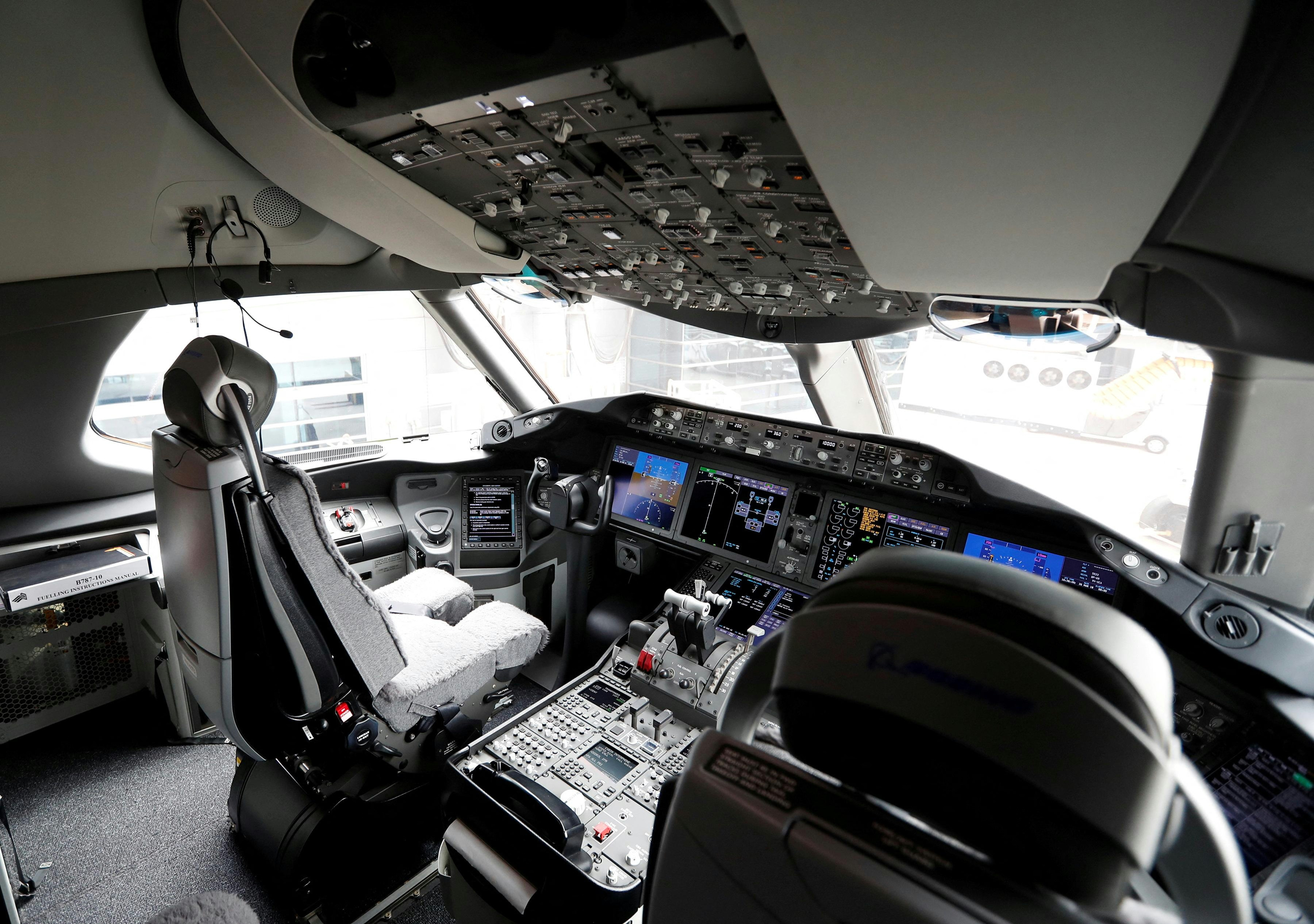
US Expert: Boeing 787 Experienced Fuel Switch Cut-Off in 2019; Japanese Pilots Did Not Intervene
US Expert Highlights Fuel Switch Cut-Off in 2019 Boeing 787 Incident; Japanese Pilots Did Not Intervene
A preliminary investigation into the Air India AI 171 crash in Ahmedabad has renewed focus on the Boeing 787’s fuel switch system. India’s Aircraft Accident Investigation Bureau (AAIB) reported that the fuel switch had shifted from the “Run” to the “Cutoff” position prior to the crash. The 15-page report, released this week, included a paraphrased exchange between Captain Sumeet Sabharwal and First Officer Clive Kunder, in which one pilot questioned the other about cutting off the fuel supply. Both pilots denied any deliberate action to do so. Shortly thereafter, a Mayday call was issued, and the aircraft crashed into a hostel for medical students, resulting in the deaths of all on board.
The AAIB report does not clarify how or why the fuel switch moved to the “Cutoff” position, leaving open the possibility of either pilot error or mechanical malfunction. To provide further insight, FinancialExpress.com consulted Mary Schiavo, a US aviation expert, who dismissed theories of intentional pilot intervention. Schiavo emphasized the absence of evidence supporting deliberate action and called for the full release of cockpit voice recorder (CVR) transcripts to avoid misinterpretation. She stated, “There is nothing here to suggest pilot suicide or murder.”
Parallels with 2019 ANA Boeing 787 Incident
Schiavo also referenced a similar event in 2019 involving an All Nippon Airways (ANA) Boeing 787. During final approach from Tokyo to Osaka, both engines failed after the aircraft’s software erroneously detected that it was on the ground. This triggered the Thrust Control Malfunction Accommodation System, which cut fuel to the engines. According to Schiavo, the pilots did not engage the fuel cutoff switches. The malfunction was ultimately traced to a software glitch rather than human error. The ANA flight, carrying 109 passengers and 9 crew members, landed safely without injuries.
Regulatory Response and Ongoing Investigations
The Air India crash has intensified scrutiny of Boeing’s fuel switch mechanisms. India’s civil aviation authority has ordered inspections of cockpit fuel switches on Boeing aircraft following the AAIB’s findings. Meanwhile, the US Federal Aviation Administration (FAA) and Boeing have maintained that the fuel switch locks are safe. However, investigations continue to explore whether the Ahmedabad crash resulted from pilot action or a technical fault.
Regulatory bodies worldwide are responding to these concerns. The UK Civil Aviation Authority (CAA) issued a warning just weeks before the crash, highlighting potential issues with fuel shutoff valves on several Boeing models, including the 737, 757, 767, 777, and 787. The fuel control switches, housed within the Throttle Control Module (TCM), had been replaced on the ill-fated AI 171 aircraft in both 2019 and 2023. Despite these replacements, questions remain regarding the reliability of the locking mechanism.
The heightened regulatory scrutiny and ongoing investigations have placed significant pressure on Boeing, with potential repercussions for its market position and investor confidence. As authorities continue to determine the root cause of the AI 171 crash, the aviation industry is preparing for possible safety reviews and further regulatory measures.
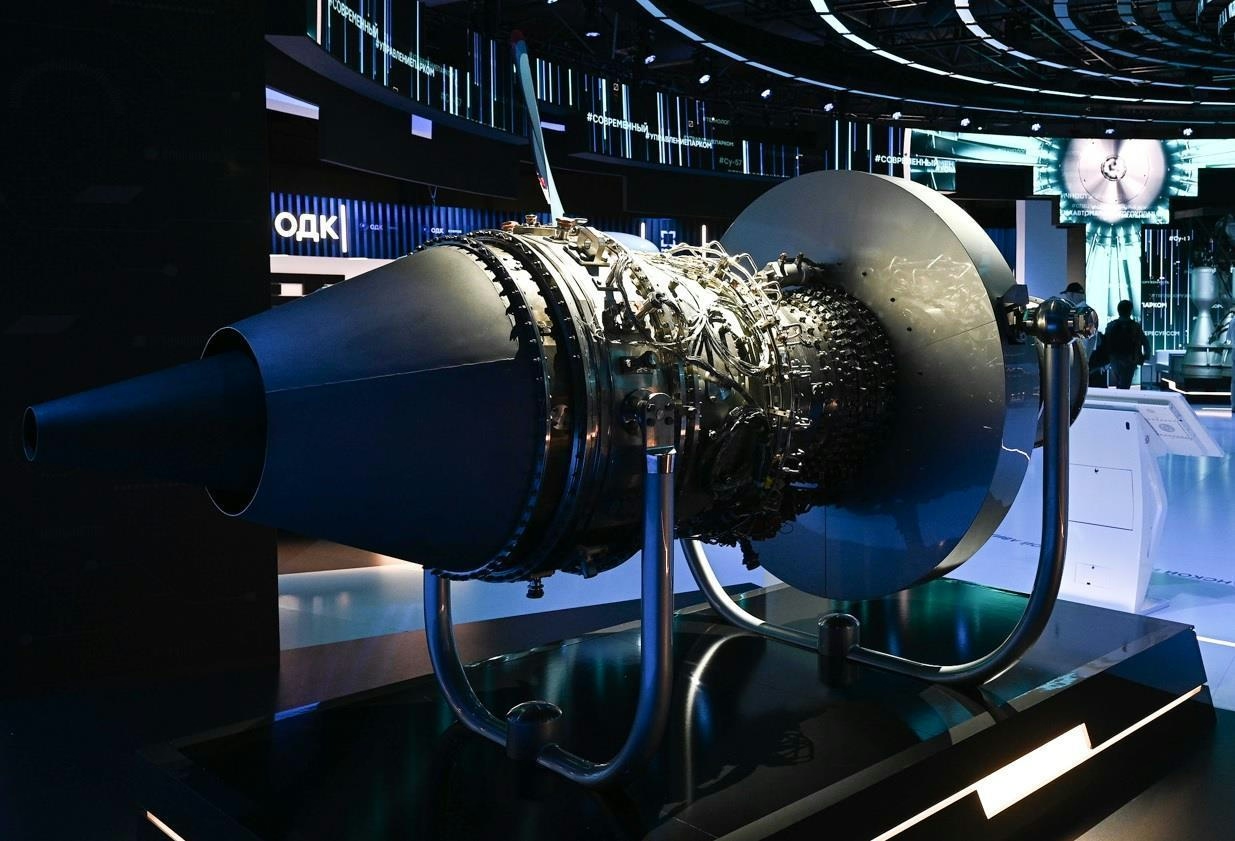
Russia Starts Modifying Be-200 Amphibious Aircraft with Domestic PD-8 Engine
Russia Advances Modification of Be-200 Amphibious Aircraft with Indigenous PD-8 Engine
Russia has initiated the process of adapting its domestically developed PD-8 turbofan engine for use in the Be-200 amphibious aircraft, a critical asset for the Ministry of Emergency Situations, particularly in aerial firefighting missions. This development reflects Moscow’s strategic effort to replace Western-made components amid ongoing international sanctions and increasing geopolitical isolation.
Development and Adaptation of the PD-8 Engine
The PD-8 engine, produced by the United Engine Corporation (UEC), was originally designed for the SJ-100 regional airliner—a fully Russian iteration of the SuperJet—created to substitute Western systems. Currently, the engine is being modified for integration into the Be-200 at the Beriev Aviation Complex in Taganrog, as confirmed by Yuri Slyusar, former head of United Aircraft Corporation and acting governor of the Rostov region.
Since entering service in 2003, the Be-200 has proven to be a reliable platform for firefighting, especially in remote and mountainous regions. Its amphibious design allows it to scoop up to 12 tons of water in just 15 seconds during low-level passes over water bodies, while also enabling both runway and water takeoffs and landings.
Originally, the Be-200 ‘Altair’ was powered by two Progress D-436 engines manufactured in Ukraine. However, the destruction of the Ukrainian engine factory in May 2022 amid the Russian military invasion has compelled Russia to accelerate the development and integration of the PD-8 as a replacement. The PD-8, currently undergoing certification testing on both the SJ-100 and Be-200 platforms, delivers approximately eight tons of thrust and incorporates core technologies derived from the larger PD-14 engine used in the MC-21 airliner.
Challenges and Market Implications
Despite these advancements, the transition to the PD-8 engine presents considerable technical and commercial challenges. As a relatively new design still in the certification phase, the PD-8’s development may encounter unforeseen technical difficulties. Furthermore, Russia’s geopolitical isolation and the persistence of international sanctions could foster skepticism among potential foreign buyers, thereby limiting export prospects for the modified Be-200.
In addition, global competitors in the amphibious aircraft sector are likely to respond by accelerating their own technological innovations and adopting more aggressive pricing strategies. This competitive environment may further complicate Russia’s efforts to establish the PD-8-equipped Be-200 in the international market.
As Russia proceeds with the PD-8 integration, the outcome will be closely monitored for its implications on the domestic aviation industry and the broader global market for specialized firefighting and amphibious aircraft.
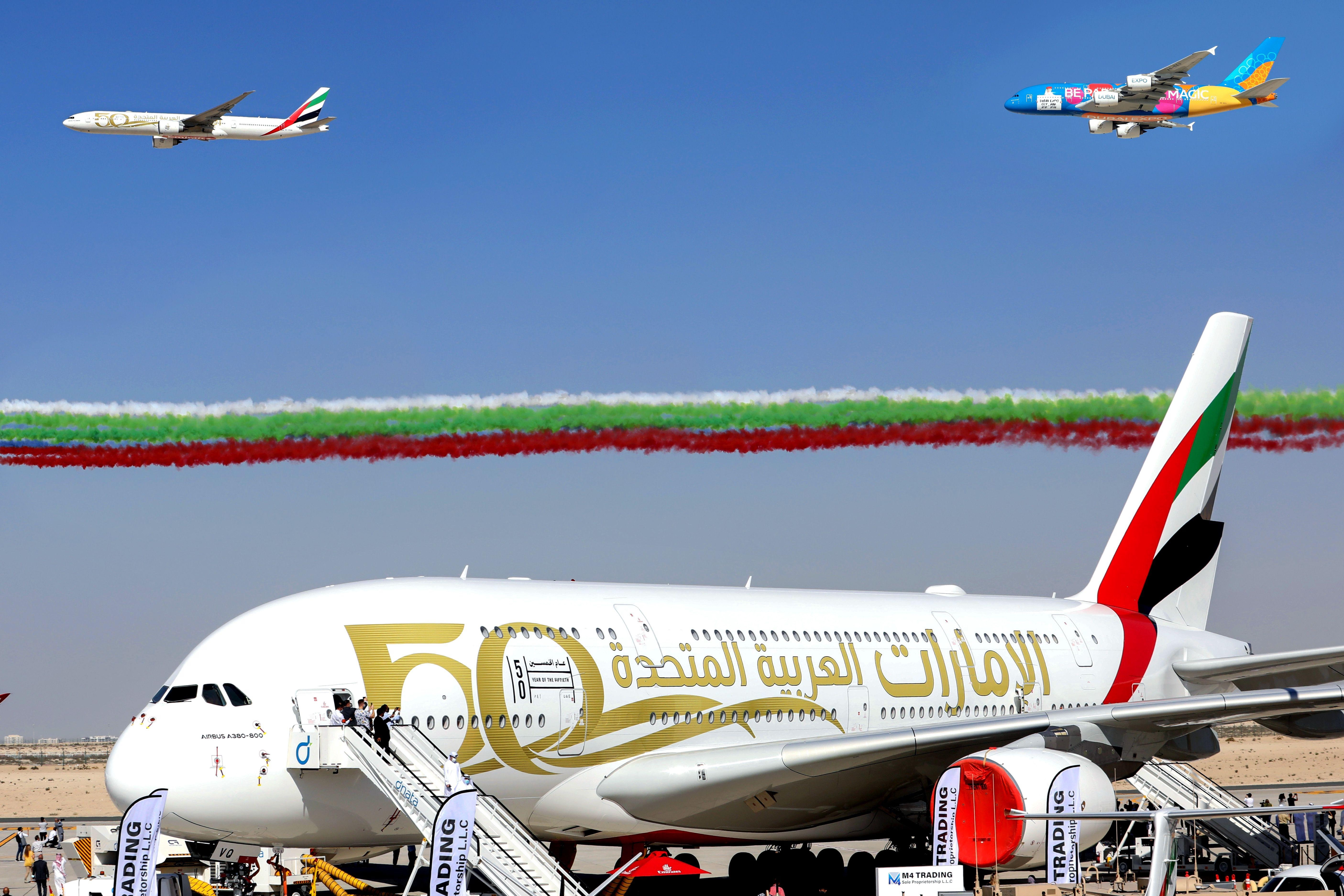
How the Boeing 777-300ER Compares to the Airbus A380 in Size
How the Boeing 777-300ER Compares to the Airbus A380 in Size
When discussing the largest commercial aircraft in operation today, the Boeing 777-300ER and the Airbus A380 are the two dominant models. Each represents a significant achievement in aerospace engineering but caters to different operational needs and market demands. Their differences in size, passenger capacity, and intended use highlight the distinct roles they play within global aviation.
Size and Capacity: A Detailed Comparison
The Airbus A380 holds the distinction of being the largest passenger airliner ever constructed. Its unique double-deck design enables it to accommodate up to 853 passengers in an all-economy configuration, or approximately 575 passengers in a more typical three-class layout. By contrast, the Boeing 777-300ER, the largest variant within the 777 family, can seat a maximum of 550 passengers in a high-density arrangement, though it more commonly carries around 396 passengers in a three-class configuration.
Physically, the A380 exceeds the 777-300ER in nearly every dimension except length. The 777-300ER measures 242 feet 4 inches (73.9 meters) in length, slightly longer than the A380’s 238 feet 7 inches (72.7 meters). However, the A380’s wingspan extends to 261 feet 8 inches (79.8 meters), significantly wider than the 777-300ER’s 212 feet 7 inches (64.8 meters). The A380 also stands taller at 79 feet (24.1 meters), compared to the 777-300ER’s height of 61 feet (18.5 meters). In terms of maximum takeoff weight, the A380’s 1,234,600 pounds (560,000 kilograms) far surpasses the 777-300ER’s 775,000 pounds (351,534 kilograms). These dimensions underscore the A380’s dominance in size and capacity, despite the 777-300ER’s advantage in length.
Operational Roles and Market Positioning
The Boeing 777-300ER was engineered to serve long-haul routes with a focus on operational efficiency and flexibility. Its twin-engine design allows it to operate from a broader range of airports, including those unable to accommodate the larger A380. This versatility, combined with lower operating costs and a moderate passenger capacity, makes the 777-300ER a preferred choice for airlines seeking to balance capacity with economic performance.
Conversely, the Airbus A380 was developed to maximize passenger volume on high-density international routes, primarily connecting major global hubs. Its immense size necessitates specialized airport infrastructure, limiting the number of airports capable of handling the aircraft. Nevertheless, the A380 remains a favored option for carriers aiming to transport large numbers of passengers efficiently on heavily trafficked routes.
Industry Response and Future Developments
The market’s response to these aircraft reflects their strategic roles within the aviation sector. Emirates, the largest operator of the A380, continues to invest in the superjumbo, with plans to upgrade its first-class suites and extend the aircraft’s operational lifespan through 2040. The airline has also expressed interest in Boeing’s developments, including visits to Boeing’s assembly facilities to monitor progress.
Meanwhile, other airlines are reassessing their fleet compositions. Kenya Airways, for example, is considering reintroducing the 777-300ER alongside exploring the Boeing 737 MAX, demonstrating the ongoing relevance of the 777 family. In response to Boeing’s advancements, Airbus is developing a stretched version of its A350 to compete directly with the forthcoming Boeing 777-9, highlighting the competitive dynamics shaping the large aircraft market.
Conclusion
While the Airbus A380 remains the world’s largest passenger aircraft by nearly every measure except length, the Boeing 777-300ER continues to hold a vital position in commercial aviation due to its versatility and efficiency. Both aircraft exemplify the evolving demands of the industry and maintain prominent roles in the global air travel landscape.
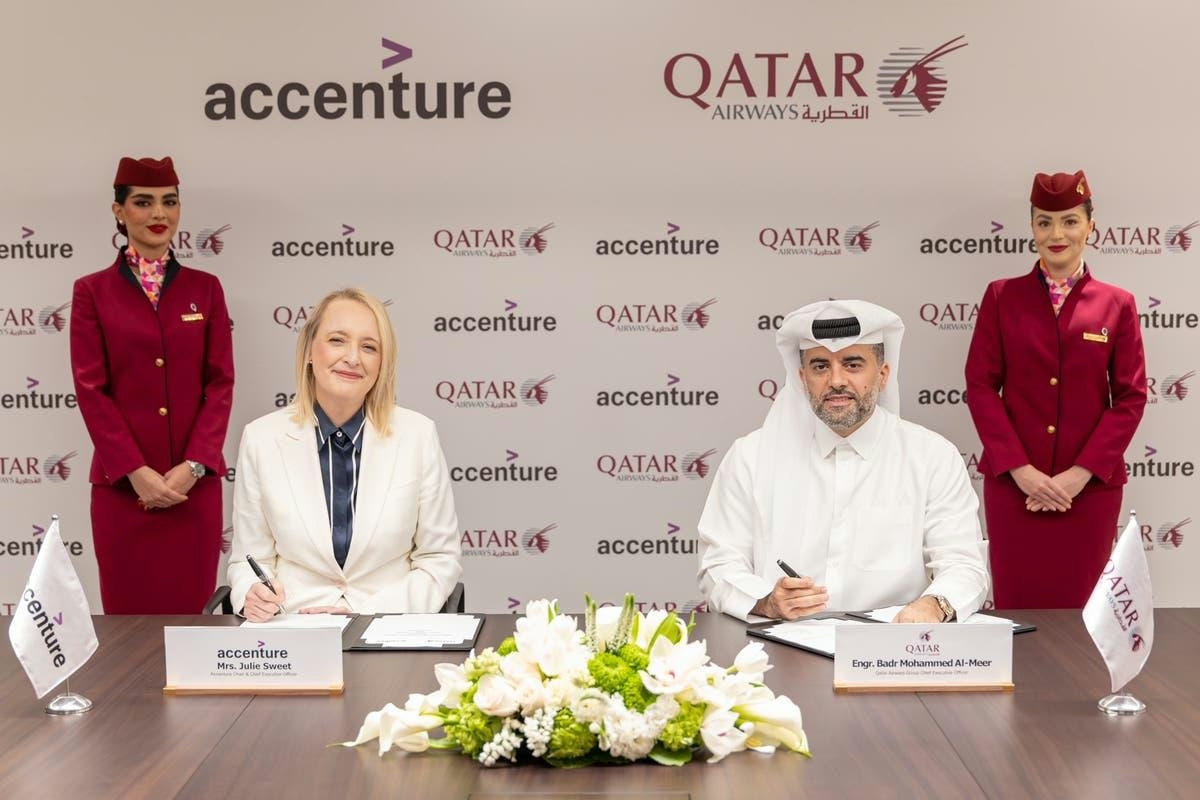
Qatar Airways and Accenture Launch AI Partnership to Advance Aviation
Qatar Airways and Accenture Launch AI Partnership to Advance Aviation
Strategic Collaboration to Drive AI Innovation
DOHA, Qatar — Qatar Airways and Accenture (NYSE: ACN) have announced a strategic partnership designed to accelerate the adoption of artificial intelligence (AI) within the aviation industry. The collaboration introduces a new initiative, “AI Skyways,” which aims to enhance customer experience, streamline operational efficiency, and bolster the overall performance of the Qatar Airways Group.
AI Skyways will serve as the cornerstone for implementing value-driven AI projects across the airline’s operations. The initiative emphasizes responsible AI practices, comprehensive data management, and the establishment of a dedicated value realisation office to monitor and maximise the impact of AI deployments. Key focus areas include optimising flight scheduling, advancing predictive maintenance capabilities, and personalising customer interactions. These efforts are intended to support Qatar Airways, recently honoured as the World’s Best Airline by Skytrax in 2025, in delivering superior travel experiences.
Leadership Perspectives and Ambitions
Engr. Badr Mohammed Al-Meer, Group CEO of Qatar Airways, highlighted the significance of the partnership, stating, “This collaboration with Accenture to establish AI Skyways marks a pivotal step in our ambition to lead AI-driven innovation in aviation. By leveraging AI across a broad spectrum of operations—from customer service to real-time data analysis—we aim to provide passengers with a seamless and enriching travel experience while enhancing our decision-making and operational responsiveness.”
Julie Sweet, Chair and CEO of Accenture, underscored the transformative potential of the initiative, noting, “Together, Qatar Airways and Accenture are harnessing cutting-edge technologies and novel approaches to generate new value for the airline and its customers. AI Skyways is a critical driver of this vision, embedding and scaling AI solutions to create exceptional travel experiences and deliver enhanced value to the airline group.”
Challenges and Industry Implications
Despite the promising outlook, integrating AI into existing aviation systems presents considerable challenges. Qatar Airways and Accenture face the complexities of ensuring smooth integration with legacy infrastructure, maintaining stringent data privacy and security standards, and managing the substantial costs associated with AI implementation. The airline has committed to upholding rigorous ethical guidelines, enforcing robust data protection measures, and conducting continuous oversight to guarantee responsible AI deployment that benefits all stakeholders.
Market responses to the announcement have been varied, with some industry analysts expressing caution regarding the immediate impact of AI in aviation. Meanwhile, competitors are closely monitoring these developments. Airlines such as All Nippon Airways have already begun implementing AI-based turbulence prediction systems, and Qatar Airways’ initiative may prompt a broader acceleration of AI adoption across the sector. This trend reflects a growing industry imperative to leverage AI technologies in order to maintain competitive advantage.
Positioning itself at the forefront of this digital transformation, Qatar Airways aims to develop scalable AI-driven solutions that can be replicated in future projects and establish new benchmarks for the aviation industry. As the sector continues to evolve, the success of such partnerships is poised to influence how airlines worldwide approach innovation and operational resilience.

US DOJ Supports Revoking Delta-Aeroméxico Partnership
US Department of Justice Supports Revocation of Delta-Aeroméxico Antitrust Immunity
DOJ Endorses DOT Proposal Amid Competition Concerns
The U.S. Department of Justice (DOJ) has formally backed the Department of Transportation’s (DOT) proposal to revoke antitrust immunity granted to the joint venture between Delta Air Lines and Aeroméxico. The DOJ’s position centers on concerns that the partnership diminishes competition within the U.S.-Mexico aviation market, potentially harming consumers and the broader industry.
In its recent filing, the DOJ underscored that antitrust immunity should be reserved for exceptional circumstances where clear public benefits are evident and competition remains robust. The department emphasized the critical role of competition in the airline sector, noting that it fosters lower prices, improved service quality, and a wider array of consumer options.
Background: Open Skies Dispute and Market Access Issues
This development follows the DOT’s announcement last month regarding potential punitive measures against Mexico for alleged violations of the 2015 U.S.-Mexico Air Transport Agreement, commonly known as the open skies agreement. The DOT accused the Mexican government of distorting the aviation market by imposing operational restrictions at Mexico City International Airport. These constraints compelled U.S. cargo carriers to shift operations to the more remote Felipe Ángeles International Airport, thereby undermining competitive conditions and restricting market access for certain airlines.
The DOT has warned that continued non-compliance by Mexico could lead to restrictions on Mexican carriers’ access to the U.S. market and the possible termination of the Delta-Aeroméxico joint venture. Such actions would significantly alter the competitive landscape, potentially limiting market access for the two airlines while creating opportunities for rival carriers to expand their operations, adjust flight schedules, and modify pricing strategies.
The DOJ echoed these concerns, stressing that maintaining competitive open market access is essential to offset the potential reduction in competition that might arise from granting antitrust immunity to an international airline alliance. The department expressed support for the DOT’s tentative decision not to renew the joint cooperation agreement (JCA) between Delta and Aeroméxico.
Responses from Delta and Aeroméxico
In response to the DOT’s proposal, Delta Air Lines defended the joint venture as “unquestionably proconsumer, procompetitive, and pro-American.” The airline highlighted the partnership’s economic contributions, including the creation of nearly 4,000 jobs, an addition of over $310 million to the U.S. GDP, and more than $200 million in annual tourism spending. Delta cautioned that dismantling the agreement could result in the cancellation of up to two dozen routes and the substitution of larger aircraft with smaller ones on many others, outcomes that would advantage competitors at the expense of consumers and employees.
Delta urged the DOT to direct any punitive measures toward the Mexican government rather than the binational business alliance. The airline also praised the DOT’s use of regulatory tools such as Part 213 and Part 212, which impose additional filing and authorization requirements on Mexican carriers operating in the U.S., encouraging the department to leverage these mechanisms to address policy concerns before taking action against the joint venture.
Aeroméxico has yet to issue a public statement regarding the proposed revocation. The situation remains dynamic as regulatory decisions and market responses continue to unfold.
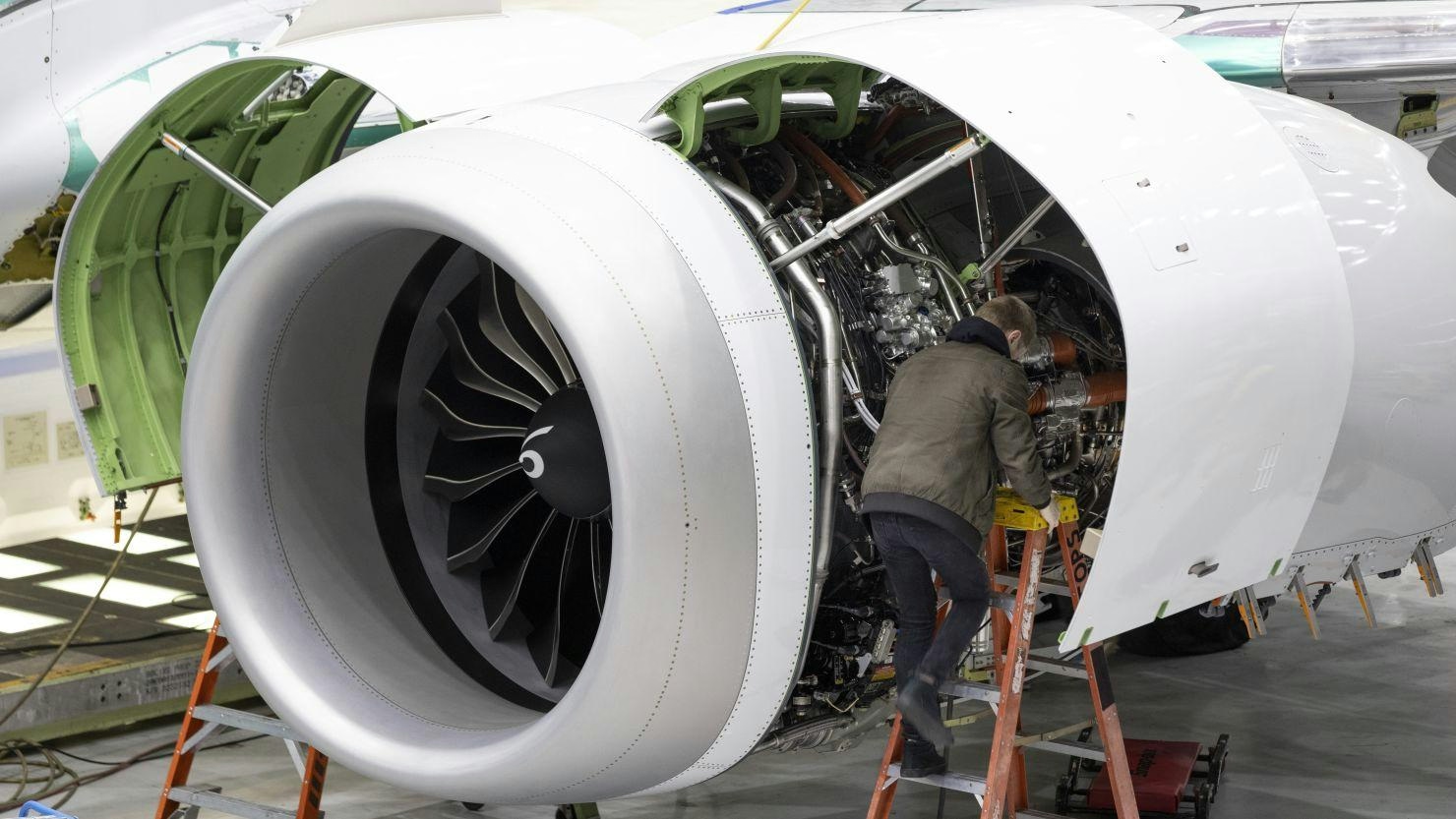
Why Boeing Equipped the 787 with Two Engine Options
Why Boeing Equipped the 787 with Two Engine Options
Boeing’s decision to offer the 787 Dreamliner with two distinct engine choices—the General Electric GEnx-1B and the Rolls-Royce Trent 1000—stands as one of the program’s most significant strategic moves. This dual-engine approach was designed to address a complex array of factors that directly influence an airline’s operational efficiency and profitability, including fuel efficiency, reliability, maintenance cycles, noise levels, ETOPS (Extended-range Twin-engine Operational Performance Standards) clearance, and fleet commonality.
Strategic Rationale Behind Dual Engine Certification
The primary motivation behind certifying the 787 with both the GEnx-1B and Trent 1000 engines was to maximize market appeal while minimizing development risk. By providing airlines with the option to select an engine that best suited their specific operational priorities—whether that be fuel consumption, maintenance schedules, noise reduction, or compatibility with existing fleets—Boeing enhanced the aircraft’s versatility. This strategy also distributed technical and supply-chain risks across two manufacturers, reducing reliance on a single supplier and strengthening the negotiating position of airlines and leasing companies.
The 787 Dreamliner itself represented a major technological leap, incorporating innovations such as a composite fuselage, bleed-less electrical systems, advanced fly-by-wire controls, and significant improvements in fuel efficiency compared to previous widebody aircraft. However, these advancements introduced considerable development challenges, particularly in integrating entirely new engine designs. Offering two engine options was a calculated measure to mitigate these risks while expanding the aircraft’s appeal across diverse airline requirements.
Operational and Financial Considerations Influencing Engine Choice
Airlines’ decisions between the GEnx-1B and Trent 1000 engines are influenced by a complex matrix of operational and financial factors. Fuel efficiency remains paramount, as even marginal improvements in fuel burn can yield substantial cost savings over an aircraft’s operational lifespan. The GEnx engine is noted for its composite fan case and swept titanium blades, which contribute to durability and extended on-wing intervals. Conversely, the Trent 1000’s three-shaft architecture is valued for its smooth power delivery and quieter operation.
Fleet commonality also plays a critical role, with carriers often favoring engines that align with their existing GE or Rolls-Royce fleets to streamline pilot training and maintenance tooling. Additionally, environmental and regulatory considerations, such as noise restrictions and emissions standards, influence engine selection, particularly for airlines operating in jurisdictions with stringent environmental policies.
Challenges and Industry Implications
Despite the advantages of the dual-engine strategy, the approach has not been without challenges. High-profile incidents, including the Air India crash, have raised concerns regarding cockpit management and fuel system complexities associated with operating different engine types. Engine failures, such as the emergency landing experienced by United Airlines, have intensified scrutiny of Boeing’s engineering decisions and affected market confidence. These events have also influenced insurance costs and prompted airlines to reevaluate operational risks.
In response, competitors have refined their aircraft designs to address similar vulnerabilities, underscoring the competitive pressures within the industry to balance innovation with reliability and safety. Boeing’s dual-engine approach on the 787 has not only shaped the aircraft’s own trajectory but has also set new standards for flexibility and choice in the global aviation market, reflecting a nuanced approach to aerospace risk management that aligns advanced technology with diverse operator needs.

Americharter Included in 2025 Inc. 5000 List for Growth in Private Aviation
Americharter Recognized on 2025 Inc. 5000 List for Private Aviation Growth
Americharter, Inc., a private jet charter company established in 2004, has been named to the 2025 Inc. 5000 list, an annual ranking by Inc. magazine that highlights the fastest-growing private companies in the United States. This accolade underscores Americharter’s remarkable expansion and innovation within the private aviation sector, placing it alongside notable past honorees such as Microsoft, Meta, and Chobani.
Anthony Battaglia, Founder and CEO of Americharter, emphasized the significance of the recognition, stating, “This recognition is a reflection of our relentless drive to innovate, from setting new service standards in aviation to developing intelligent software that redefines the client experience. It’s a tremendous honor to be recognized among the fastest-growing private companies in America, and we couldn’t be prouder of our clients’ continued partnership. This achievement is a testament to our long-term commitment to exceptional service and strong business relationships.”
Industry Context and Company Strategy
The 2025 Inc. 5000 list celebrates companies that have achieved exceptional growth despite ongoing economic challenges, including inflationary pressures and a volatile labor market. Among the top 500 companies on the list, the median three-year revenue growth rate reached an impressive 1,552 percent, with these businesses collectively contributing over 48,000 new jobs to the U.S. economy. Mike Hofman, editor-in-chief of Inc., remarked, “Making the Inc. 5000 is always a remarkable achievement, but earning a spot this year speaks volumes about a company’s tenacity and clarity of vision. These businesses have thrived amid rising costs, shifting global dynamics, and constant change.”
Americharter’s inclusion comes at a critical juncture for the private aviation industry, which is witnessing a resurgence in business travel alongside intensifying competition. The company faces the challenge of sustaining its growth trajectory in a market dominated by established players such as Bombardier and Gulfstream. Industry analysts suggest that Americharter’s innovative approach, including the development of an AI-powered client platform, may prompt strategic responses from competitors aiming to capitalize on emerging opportunities or counter Americharter’s momentum.
The broader aviation sector is also navigating operational challenges and fleet expansion efforts, as demonstrated by carriers like Pacific Island Airlines and Spirit Airlines. These evolving industry dynamics are likely to influence Americharter’s strategic decisions as it seeks to maintain its growth and adapt to changing market conditions.
Americharter offers a comprehensive range of global private jet charter and aviation solutions, providing access to a network of aircraft selected for their range, speed, comfort, luxury, and affordability—without requiring memberships or long-term commitments. Its services encompass private jet charters, aircraft sales, management, consulting, medical flights, cargo charters including humanitarian aid, and support for remote destinations. The company is actively developing an advanced client platform designed to streamline booking processes, enhance transparency, and deliver intelligent assistance, all while preserving the personalized service that defines its brand.
Inc. will honor the 2025 Inc. 5000 honorees at its annual conference and gala, scheduled for October 22–24 in Phoenix. The top 500 companies will be featured in the Fall issue of Inc. magazine. Further details and the full list are available at www.inc.com/inc5000.
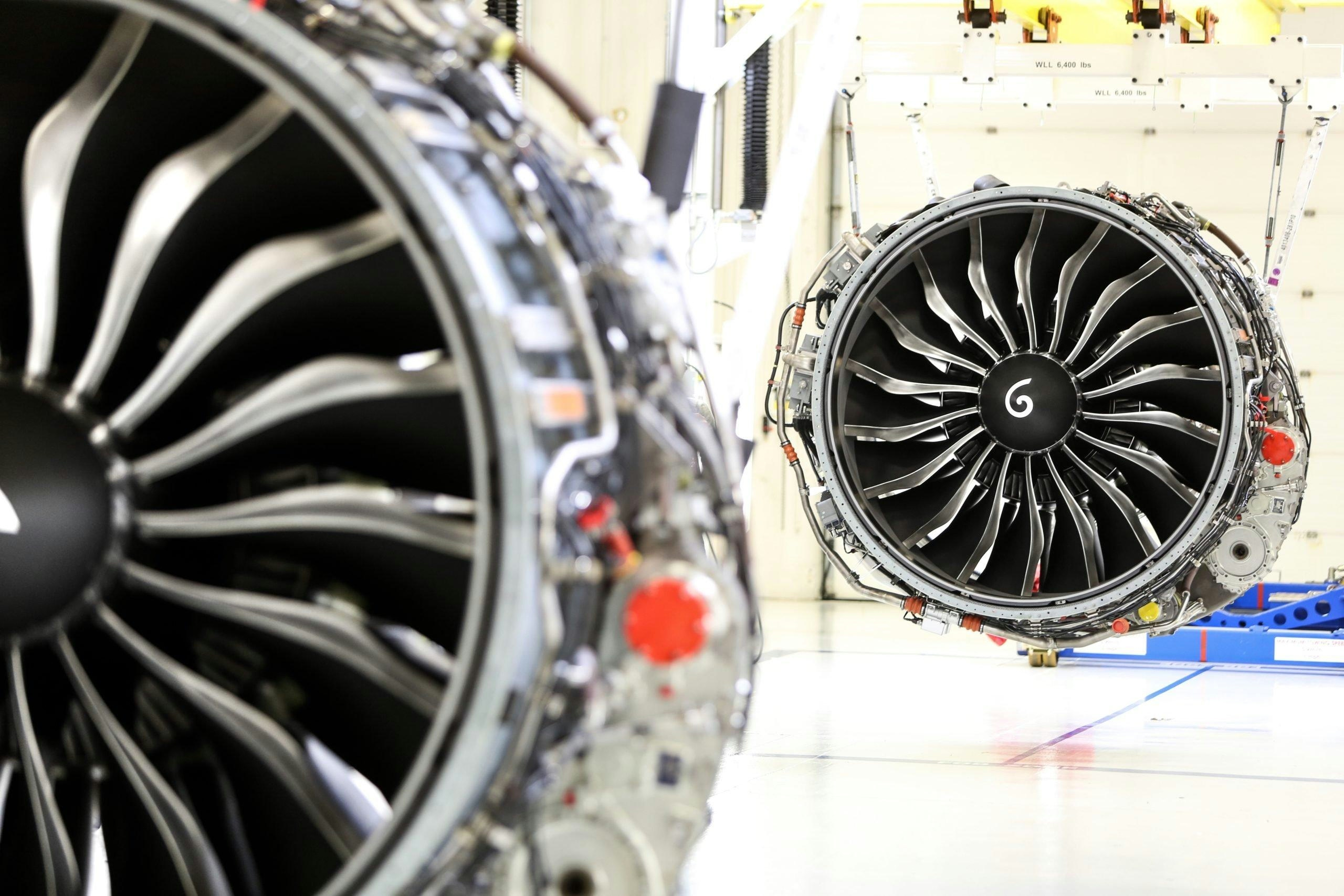
AirAsia adopts GE Aerospace Fuel Insight to boost efficiency and sustainability
AirAsia Implements GE Aerospace Fuel Insight to Enhance Efficiency and Sustainability
GE Aerospace has announced that AirAsia will adopt its Fuel Insight platform across the airline’s entire fleet, marking a significant step toward improving fuel efficiency and advancing sustainability efforts. This renewed partnership highlights AirAsia’s dedication to operational excellence and underscores the growing reliance on GE Aerospace’s Software as a Service (SaaS) solutions within the aviation sector.
Deployment and Operational Benefits
The Fuel Insight platform will be implemented across all AirAsia Aviation Group’s air operator certificates (AOCs) throughout Southeast Asia. By harnessing advanced analytics and real-time operational data, the system enables AirAsia’s operations team to identify opportunities for enhanced fuel performance, optimize route planning, and reduce unnecessary fuel consumption. These improvements are anticipated to generate substantial cost savings, increase operational reliability, and contribute to the airline’s environmental objectives by curbing avoidable fuel burn.
Datuk Captain Chester Voo, Deputy Group CEO (Airline Operations) of AirAsia Aviation Group, described the collaboration as “a strategic step forward in strengthening how we manage fuel efficiency across the Group.” He emphasized that GE Aerospace’s technology equips AirAsia with the tools to make smarter, data-driven decisions that support both cost-efficiency and sustainability goals, allowing the airline to maintain competitive fares while operating more efficiently.
Challenges and Industry Context
Despite the clear advantages, integrating GE Aerospace’s Fuel Insight technology presents challenges for AirAsia. The airline must carefully manage the transition to ensure minimal disruption to flight schedules, while addressing the technical complexities and initial costs associated with adopting new digital systems. Market responses to the announcement have been mixed; some investors express optimism regarding the long-term sustainability and cost benefits, whereas others remain cautious about the upfront investment and potential integration difficulties.
The competitive environment is also shifting, with carriers such as Turkish Airlines—AirAsia X’s rival on routes like Kuala Lumpur to Istanbul—likely to pursue similar sustainability initiatives to preserve their market positions. This broader industry movement toward greener operations is further bolstered by GE Aerospace’s recent strong earnings report and an upgraded profit forecast for 2025, reflecting robust market confidence in the technology’s potential.
Through this partnership, AirAsia aims to leverage cutting-edge analytics to achieve both financial and environmental gains. The adoption of Fuel Insight not only reinforces the airline’s commitment to sustainability but also exemplifies how innovative technology can drive smarter, more efficient aviation practices across the region.
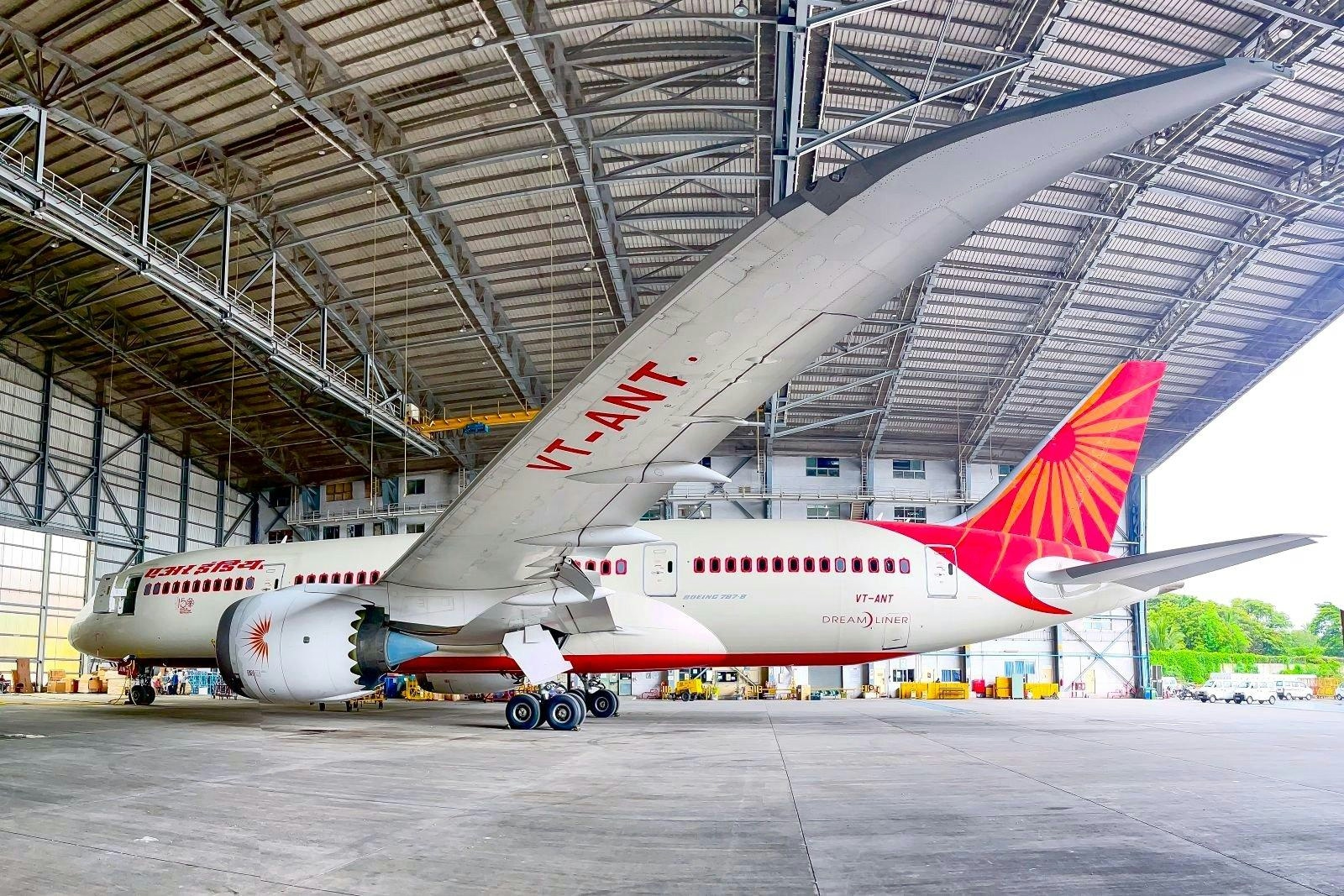
Air India Starts Retrofit of Boeing 787-8 Fleet
Air India Commences Extensive Retrofit of Boeing 787-8 Fleet Amid Operational Pressures
Air India has initiated a comprehensive retrofit programme targeting its Boeing 787-8 fleet, encompassing 26 aircraft. The initiative aims to modernise the fleet with upgraded interiors and enhanced systems to elevate passenger experience and align with the airline’s updated service standards. The first aircraft, VT-ANT, was transferred to Boeing’s Victorville, California facility in July 2025, with a second aircraft scheduled for retrofit commencement in October. Both are expected to return to service by December 2025, while the full programme is projected to conclude by mid-2027.
Interior Upgrades and Operational Challenges
The retrofit involves a complete redesign of the 787-8 cabins, introducing refreshed layouts across Business, Premium Economy, and Economy classes. Passengers will benefit from new seating arrangements, state-of-the-art inflight entertainment systems, updated carpeting and upholstery, renovated lavatories, and modernised galleys. These enhancements are part of Air India’s broader strategy to improve its product offering and customer experience.
However, the retrofit programme coincides with significant operational challenges. The temporary reduction in available aircraft has forced Air India to suspend certain routes, including services to Washington Dulles. These difficulties are compounded by intensified scrutiny following a recent crash involving an Air India 787-8, currently under investigation as a potential criminal incident. In response, the airline has conducted thorough inspections of fuel control switches across its 787-8 fleet, reporting no faults. This precautionary measure aligns with similar actions taken by competitors such as Lufthansa, which has also re-examined fuel control systems on its Boeing aircraft.
Reliability Enhancements and Future Plans
Beyond interior refurbishments, Air India is implementing a Reliability Enhancement Programme for the 787-8s. This initiative includes avionics upgrades and critical system improvements designed to meet evolving industry standards. The process involves meticulous review of maintenance and configuration records, with modifications guided by Boeing’s service bulletins. Additionally, seven aircraft will undergo heavy maintenance D-checks at the Victorville facility, ensuring long-term safety and operational performance.
Looking ahead, Air India intends to commence retrofitting its 13 Boeing 777-300ERs from early 2027. This subsequent programme has experienced delays due to supply chain constraints but is anticipated to be completed by October 2028.
Progress on Narrow-Body Fleet Retrofit
In parallel, Air India’s retrofit of 27 legacy A320neo aircraft, launched in September 2024, remains on schedule for completion by September 2025. The introduction of a third production line at GMR’s MRO facility in Hyderabad has accelerated the process, with 16 aircraft already upgraded. The 15th A320neo returned to service on 9 August 2025, followed by the 16th scheduled for 11 August. The remaining 11 aircraft are expected to be completed within the established timeline. These narrow-body jets, featuring new cabin interiors, are being deployed on key domestic and short-haul international routes, enhancing the overall passenger experience across Air India’s network.
Despite the operational pressures and heightened industry scrutiny, Air India’s retrofit programmes represent a substantial investment in fleet modernisation and passenger comfort.
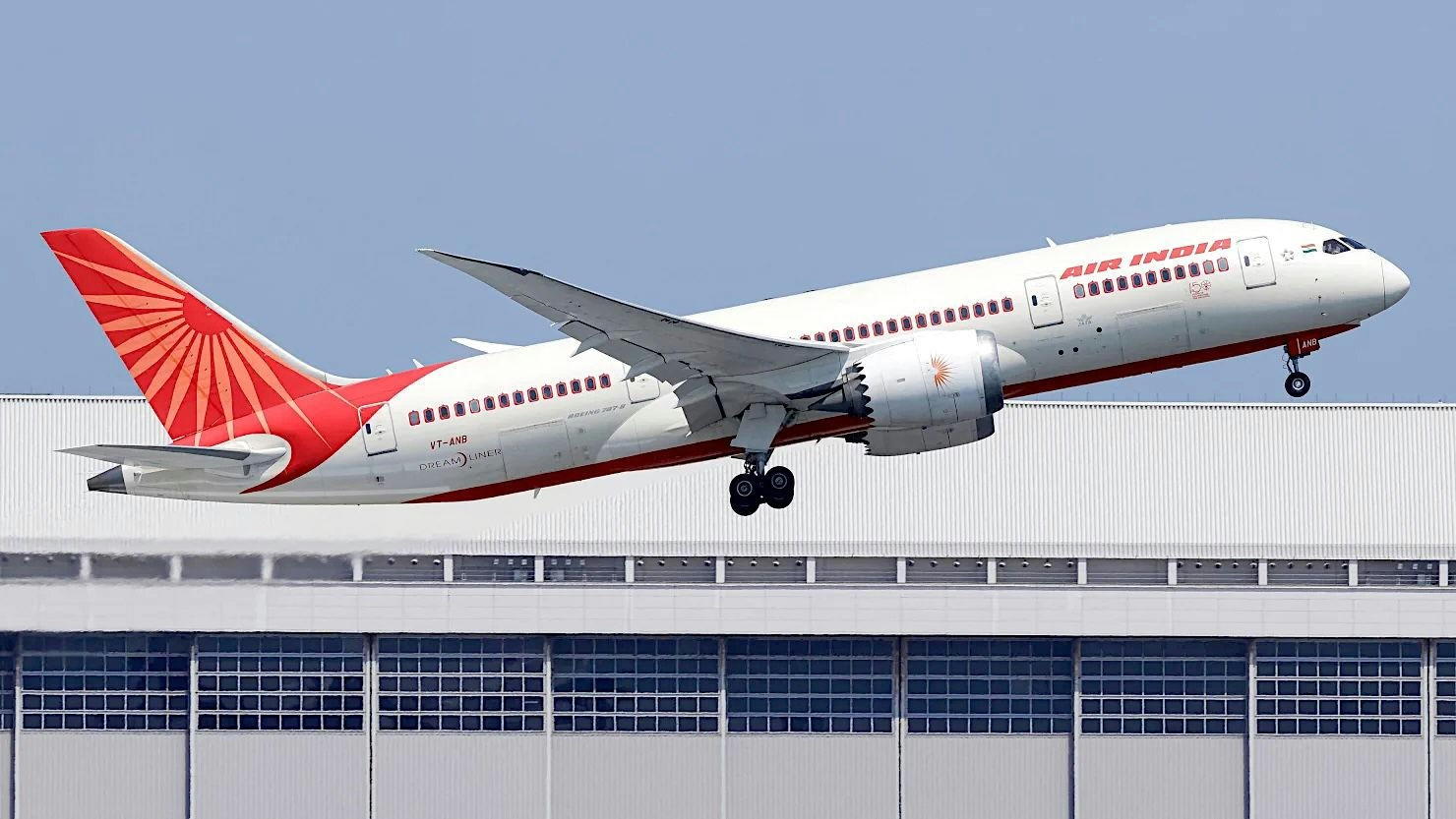
Aviation Expert: Boeing Dreamliner Software Reduced Fuel Use Twice Without Pilot Input
Aviation Expert Highlights Boeing Dreamliner Software’s Role in Fuel Cut Incidents
Aviation attorney and former US Department of Transportation Inspector General Mary Schiavo has cautioned against hastily attributing blame to pilots in the aftermath of the recent Air India crash. She underscored the significance of Boeing Dreamliner’s automated systems, which have been implicated in previous incidents involving unexpected fuel reductions without pilot intervention. Schiavo emphasized that the Boeing 787’s software is capable of independently cutting fuel to its engines, a factor that demands thorough investigation before fault is assigned.
Speaking to journalist Barkha Dutt, Schiavo noted that pilots are often blamed in approximately 75% of aviation incidents, yet many such accusations have been disproven. She described this tendency as not only unfair but overly simplistic and potentially harmful. “There are too many suspicious things to say, ‘Oh, it’s the pilots,’” she remarked, referencing earlier cases involving the same aircraft model where onboard systems autonomously reduced or cut fuel flow mid-flight.
Past Incidents and the TCMA System
Schiavo specifically cited a 2019 incident involving an All Nippon Airways (ANA) Boeing 787, where the aircraft’s system erroneously shut off fuel mid-air after mistakenly detecting that the plane had already landed. The software in question, known as the Thrust Control Malfunction Accommodation (TCMA) system, has been previously implicated in similar malfunctions. Designed to help the aircraft distinguish between flight and ground conditions, the TCMA can command the engines to reduce or cut power under certain circumstances. In the ANA case, the system’s premature fuel cutoff forced the plane to glide heavily to the runway. Fortunately, the incident occurred during landing rather than takeoff, preventing a crash.
Schiavo also referenced a more recent United Airlines Dreamliner flight from Washington, D.C., to Nigeria, where the aircraft reportedly entered a nose dive due to thrust and engine issues, again raising concerns about the behavior of automated systems.
Implications for Boeing and the Aviation Industry
The TCMA system, mandated by the US Federal Aviation Administration (FAA), lies at the heart of these concerns. Schiavo warned that errors by such automated protocols can have dire consequences, particularly during critical phases like takeoff when pilots have only seconds to react. These revelations come amid heightened scrutiny of Boeing, which is already grappling with a series of safety and production challenges.
The Air India crash has intensified regulatory and public attention, prompting increased inspections of Boeing 787 aircraft operated by Air India and causing flight delays and cancellations. The incident has also sparked broader questions regarding cockpit confusion, fuel management, and the reliability of automated systems, all of which are influencing perceptions of the Dreamliner’s safety.
Meanwhile, Boeing’s competitors are leveraging the situation to highlight their own advancements in software and integrated control technologies, positioning safety features as a key competitive advantage. As Boeing seeks to restore confidence in its flagship aircraft, experts like Schiavo stress the necessity of a comprehensive investigation that carefully weighs both human and technological factors before drawing conclusions.
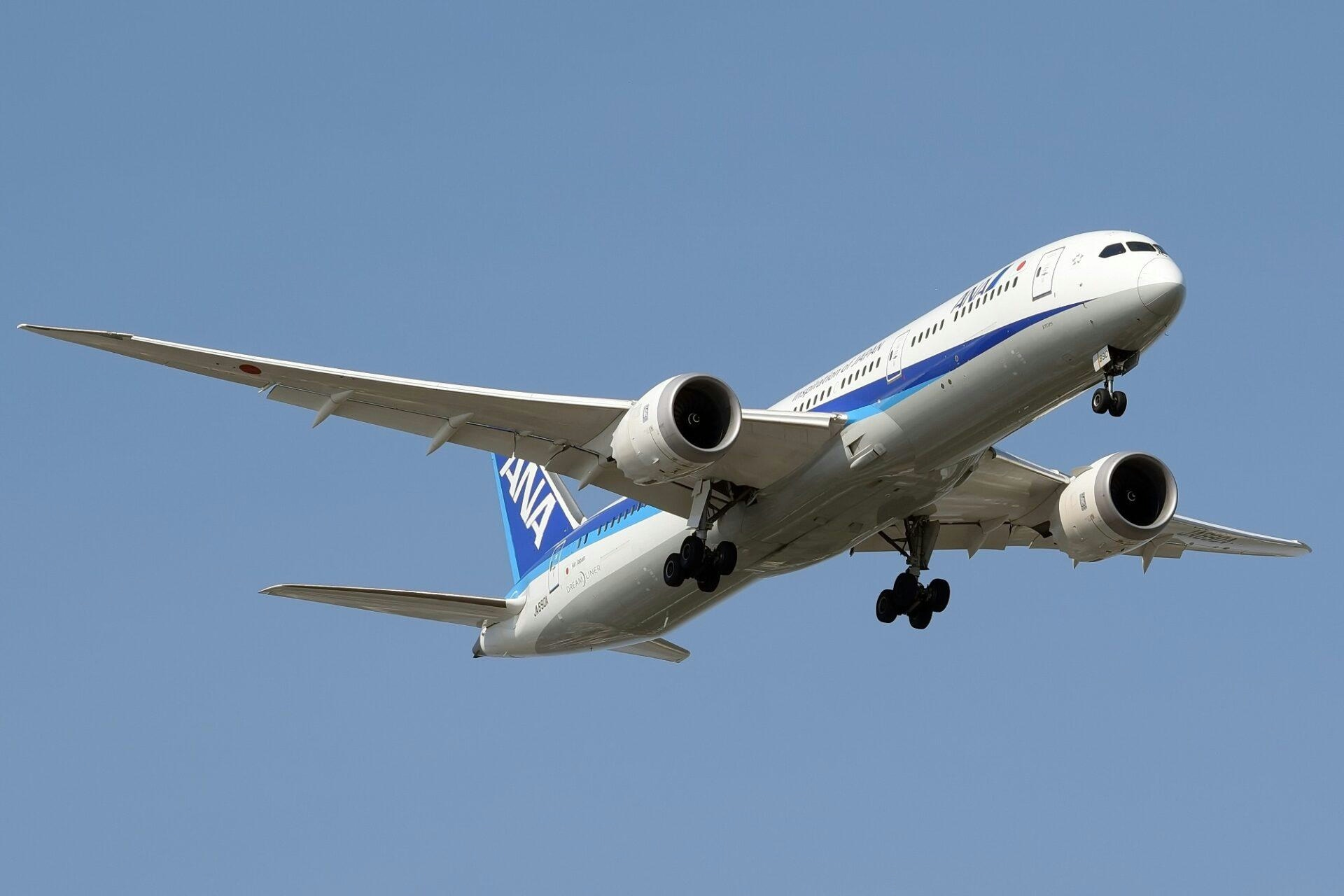
ANA Introduces AI Technology to Predict Turbulence with 86% Accuracy
ANA Introduces AI Technology to Predict Turbulence with 86% Accuracy
Advancing Flight Safety through Artificial Intelligence
All Nippon Airways (ANA) has implemented a pioneering artificial intelligence (AI) system designed to predict turbulence with an accuracy rate of 86 percent, marking a significant advancement in aviation safety and passenger comfort. Developed in collaboration with BlueWX, a company born from a partnership with Keio University, the system utilizes deep learning algorithms trained on a decade of turbulence data. This initiative positions ANA as the first airline to deploy BlueWX’s technology fleet-wide following successful trials involving 2,500 pilots.
The project, which began in 2019 and culminated in the establishment of BlueWX in 2023, addresses a longstanding challenge in the airline industry. Hiroyuki Kometani, ANA’s Executive Vice President of Operation Division, emphasized the importance of this development, stating that the integration of AI and deep learning techniques will provide a more reliable and comfortable travel experience for passengers. The AI model demonstrated superior performance compared to traditional turbulence forecasting methods during extensive testing phases that started in 2021, with pilots reporting enhanced reliability and real-world effectiveness.
Addressing a Growing Safety Concern
Turbulence remains a critical safety and operational issue for airlines globally. According to the National Transportation Safety Board (NTSB), turbulence is responsible for 30 to 50 percent of aviation incidents, with recent years witnessing serious injuries and fatalities, including the death of a British passenger in 2024. Beyond the immediate safety risks, turbulence contributes to significant economic losses through cargo damage, equipment repairs, and delays caused by unscheduled inspections.
Kaz Watanabe, CEO of BlueWX, highlighted the increasing severity of turbulence, partly attributed to climate change, and underscored the urgency of deploying advanced predictive technologies. While ANA’s AI system represents a major technological breakthrough, the airline acknowledges ongoing challenges in maintaining the model’s accuracy and reliability across diverse flight conditions and altitudes. Ensuring consistent performance in varying weather scenarios will be essential as the system is integrated more broadly.
Industry Impact and Future Prospects
The introduction of this AI-powered turbulence prediction system has been met with positive market reactions, with expectations that it will enhance passenger confidence and potentially increase demand for ANA’s services. Industry analysts anticipate that other airlines may accelerate the development and adoption of similar AI technologies to improve their turbulence forecasting capabilities, aiming to match ANA’s gains in operational efficiency and customer satisfaction.
Looking forward, BlueWX intends to expand its AI-driven weather forecasting solutions to additional airlines, seeking to elevate safety standards and operational effectiveness throughout the aviation sector. This development signals a broader shift towards leveraging artificial intelligence to address complex challenges in air travel.
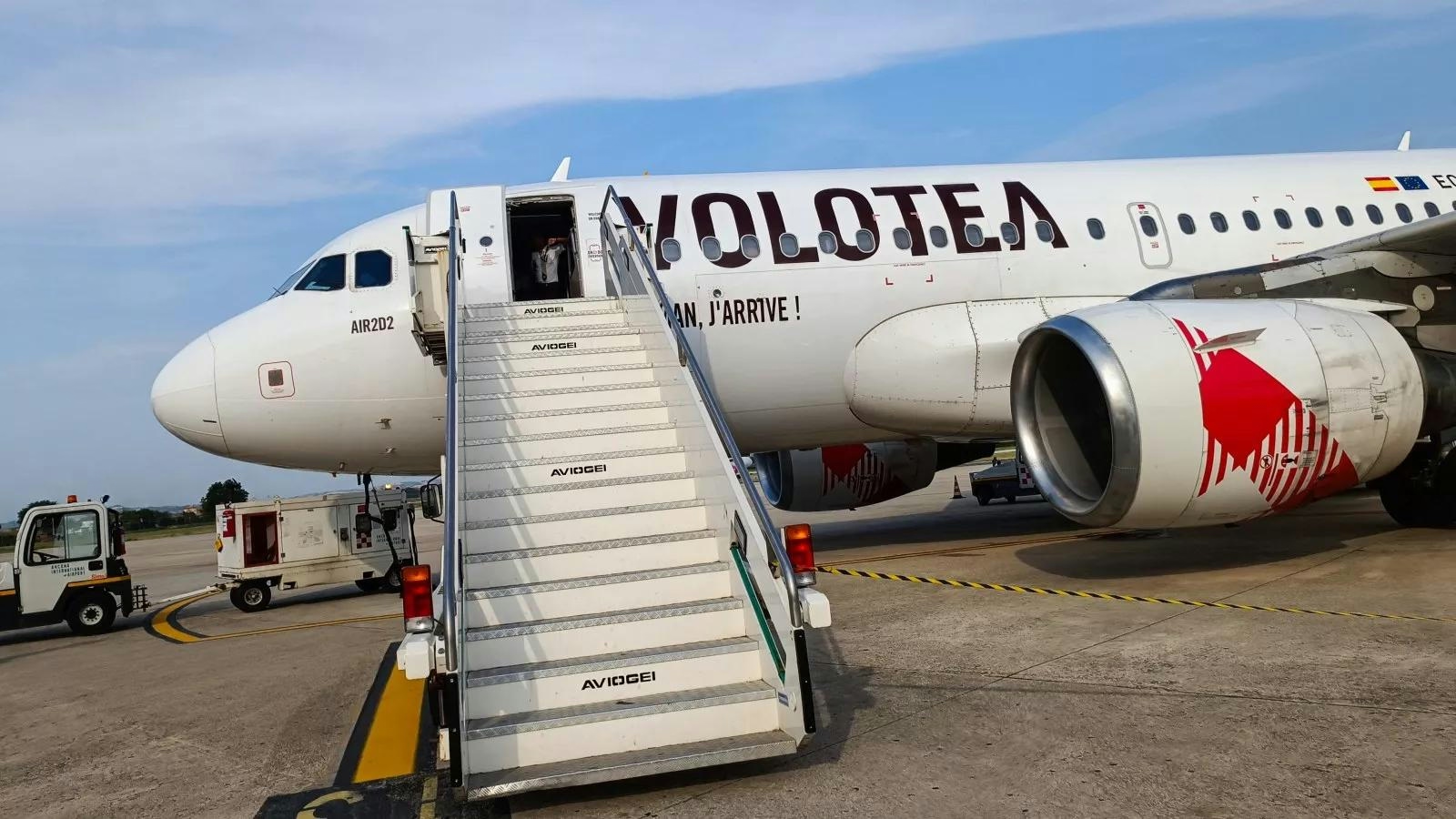
Investigation Launched into Fatal Injury Caused by Volotea A319 Engine at Milan Bergamo Airport
Investigation Launched into Fatal Injury Caused by Volotea A319 Engine at Milan Bergamo Airport
A tragic accident at Milan Bergamo Airport has resulted in the death of a ground worker after being struck by the engine of a Volotea Airbus A319 during taxiing operations. The incident occurred as the aircraft was maneuvering along a taxiway in preparation for departure. Italian authorities have initiated a formal investigation to establish the exact circumstances surrounding the fatality.
Details of the Incident
The accident took place at Milan Bergamo Airport, a key hub for low-cost carriers in northern Italy. The Volotea Airbus A319 involved, a narrow-body aircraft typically deployed on short- and medium-haul routes, was not carrying passengers at the time of the incident. Preliminary reports indicate that the victim, whose identity has not been disclosed, was working in close proximity to the aircraft’s engine when the accident occurred. The flight crew onboard the aircraft were unharmed.
Investigators are currently examining whether the engine was operating at high thrust during the incident and if all standard safety protocols were properly observed. The precise sequence of events remains under review as authorities gather further evidence.
Investigation and Regulatory Response
Italy’s Civil Aviation Authority (ENAC) has launched a comprehensive inquiry focusing on airport safety procedures and the aircraft’s taxiing operations. The investigation seeks full cooperation from Volotea, airport management, and ground personnel to clarify the factors that contributed to the fatal accident.
The inquiry will evaluate whether established safety measures were adhered to and if any technical or procedural lapses played a role. The findings are anticipated to influence future safety protocols and may have wider implications for ground operations across Italian airports.
Airport and Airline Statements
Both Milan Bergamo Airport and Volotea have expressed their condolences to the family of the deceased and have pledged full cooperation with the ongoing investigation. Airport officials confirmed that the accident occurred during routine taxiing and noted that overall airport operations were not significantly disrupted. They also emphasized their commitment to reviewing and enhancing safety protocols to prevent similar incidents in the future.
A spokesperson for Volotea stated, “We are deeply saddened by this tragedy and are fully cooperating with the authorities to understand the cause of this incident. Our thoughts are with the family of the individual involved, and we are committed to supporting the investigation process in any way possible.”
Broader Implications for Volotea and the Industry
This incident places Volotea under heightened regulatory scrutiny and may expose the airline to compensation claims as well as reputational challenges. Should Volotea be publicly traded, market reactions could include fluctuations in its stock price. Competitors within the industry may respond by reinforcing their own safety measures and issuing public reassurances to maintain customer confidence.
The tragedy highlights the critical importance of strict adherence to ground safety protocols, particularly in the vicinity of active aircraft engines. Modern jet engines, such as those fitted on the Airbus A319, present significant hazards if safety procedures are not rigorously enforced. The ongoing investigation will be closely monitored by industry stakeholders and the public alike.
For further updates, official statements from Volotea and Italian aviation authorities should be consulted.

Jet2.com Opens New Maintenance Hangar at Manchester Airport
Jet2.com Opens New Maintenance Hangar at Manchester Airport
UK leisure airline Jet2.com has inaugurated a new multi-million-pound maintenance hangar at Manchester Airport, marking a pivotal expansion of its in-house engineering capabilities. The 6,300-square-metre facility, developed in collaboration with technical construction specialist TSL, was completed exactly one year after the demolition of the previous hangar on the same site. This development aligns with Jet2.com’s long-term growth strategy and commitment to enhancing operational efficiency.
Expanded Capacity and Training Facilities
Located adjacent to Jet2.com’s existing hangar, the new building significantly increases maintenance capacity, enabling teams to service up to three aircraft simultaneously, or six across both hangars. This expansion is designed to support the airline’s growing fleet and operational demands. The facility also includes a dedicated apprentice training suite, complete with workshops and classrooms, reflecting Jet2.com’s investment in workforce development. The airline’s engineering apprenticeship programme has grown to more than 30 participants, underscoring its focus on cultivating skilled talent. In addition, the hangar incorporates solar panels on its roof, contributing to the company’s sustainability objectives by reducing energy consumption.
Steve Heapy, chief executive of Jet2.com and Jet2holidays, described the new hangar as a “world-class facility” that enhances the airline’s maintenance capabilities and supports continued growth. He emphasized the importance of bringing more engineering professionals into the business to sustain operational success.
Industry Context and Competitive Challenges
Jackie Wild, group chief executive of TSL, highlighted the collaborative effort in delivering the project safely, on time, and within budget. The completion of the hangar is seen as a key component in supporting Jet2.com’s expansion plans.
Nevertheless, the launch of the new facility occurs within a competitive environment at Manchester Airport, where multiple airlines already operate maintenance services. Jet2.com faces potential challenges including competition for skilled engineers, regulatory scrutiny concerning safety and efficiency, and limited availability of hangar space. Similar pressures have been observed in other markets, such as South Florida, where airlines have responded by upgrading maintenance infrastructure or seeking regulatory adjustments to maintain competitive balance.
Despite these hurdles, Jet2.com’s substantial investment in the new hangar demonstrates its commitment to operational excellence and workforce development, positioning the airline to better meet the demands of a growing fleet amid an increasingly competitive aviation sector.
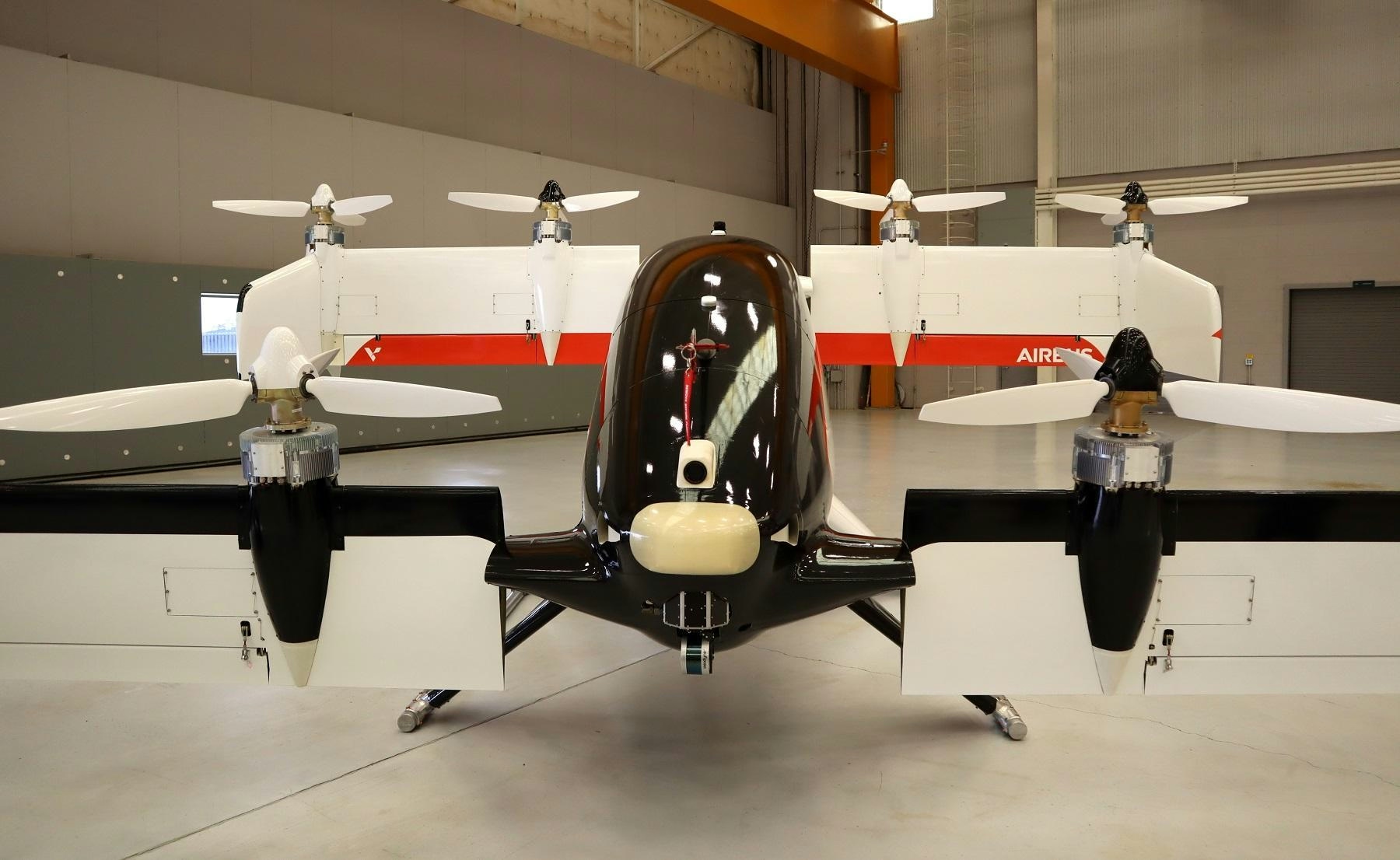
NASA Tests Aircraft to Enhance Air Taxi Flight Controls
NASA Advances Flight Control Technologies for Air Taxis
NASA is making significant progress toward the realization of air taxis by conducting comprehensive wind tunnel and flight tests on a scaled electric Vertical Takeoff and Landing (eVTOL) aircraft at its Langley Research Center in Hampton, Virginia. On April 22, 2025, researchers gathered critical data aimed at improving flight control systems essential for the safe and reliable operation of future urban air mobility vehicles.
The RAVEN SWFT Project and Its Objectives
The initiative, known as the Research Aircraft for eVTOL Enabling techNologies Subscale Wind Tunnel and Flight Test (RAVEN SWFT), employs a 38-pound model with a six-foot wingspan outfitted with 24 independently actuated control effectors. These sophisticated components enable precise manipulation of the aircraft’s movements, providing an ideal platform for investigating advanced flight control mechanisms and autonomous flight capabilities.
As the air taxi industry prepares for commercial deployment, engineers face the complex challenge of ensuring these vehicles can operate safely within dense urban environments. Real-world flight dynamics data is crucial for developing robust control systems capable of stabilizing and guiding aircraft under diverse and unpredictable conditions. Much of the existing data remains proprietary within private companies, creating a knowledge gap that NASA’s project seeks to address by generating and openly sharing non-proprietary data to benefit the wider aerospace community.
Siena Whiteside, lead of the RAVEN project, emphasized the importance of NASA’s role in this research, stating, “NASA’s ability to perform high-risk flight research for increasingly automated and autonomous aircraft is really important. We need to push these vehicles to their limits and understand what happens during unforeseen events, such as a motor failure. NASA is willing to take those risks and publish the data so everyone can benefit.”
Testing Methodology and Broader Implications
Initial testing began in 2024 within NASA’s 12-Foot Low-Speed Tunnel, where researchers simulated real-world flight scenarios to gather data that would mitigate risks during subsequent flight trials. The testing sequence progressed from tethered flights to free-flight operations, with the aircraft remotely piloted from the ground to ensure safety and control.
The RAVEN SWFT project forms part of NASA’s broader commitment to advancing urban air mobility technologies, alongside initiatives such as the X-59 supersonic aircraft program. Both projects confront significant challenges, including ensuring the reliability and safety of advanced flight control systems and navigating complex regulatory environments, particularly concerning supersonic flight over populated areas. Despite these hurdles, the market response has been encouraging, with urban air mobility companies showing strong interest in integrating quieter and more efficient air travel solutions. Concurrently, competitors are accelerating their development of quiet supersonic technologies to remain competitive in the rapidly evolving air taxi sector.
By openly disseminating its research findings, NASA aims to foster innovation and establish industry standards that promote safe, efficient, and accessible air taxi operations. The ongoing tests at Langley represent a vital step toward a future where air taxis provide fast and reliable transportation across urban landscapes.
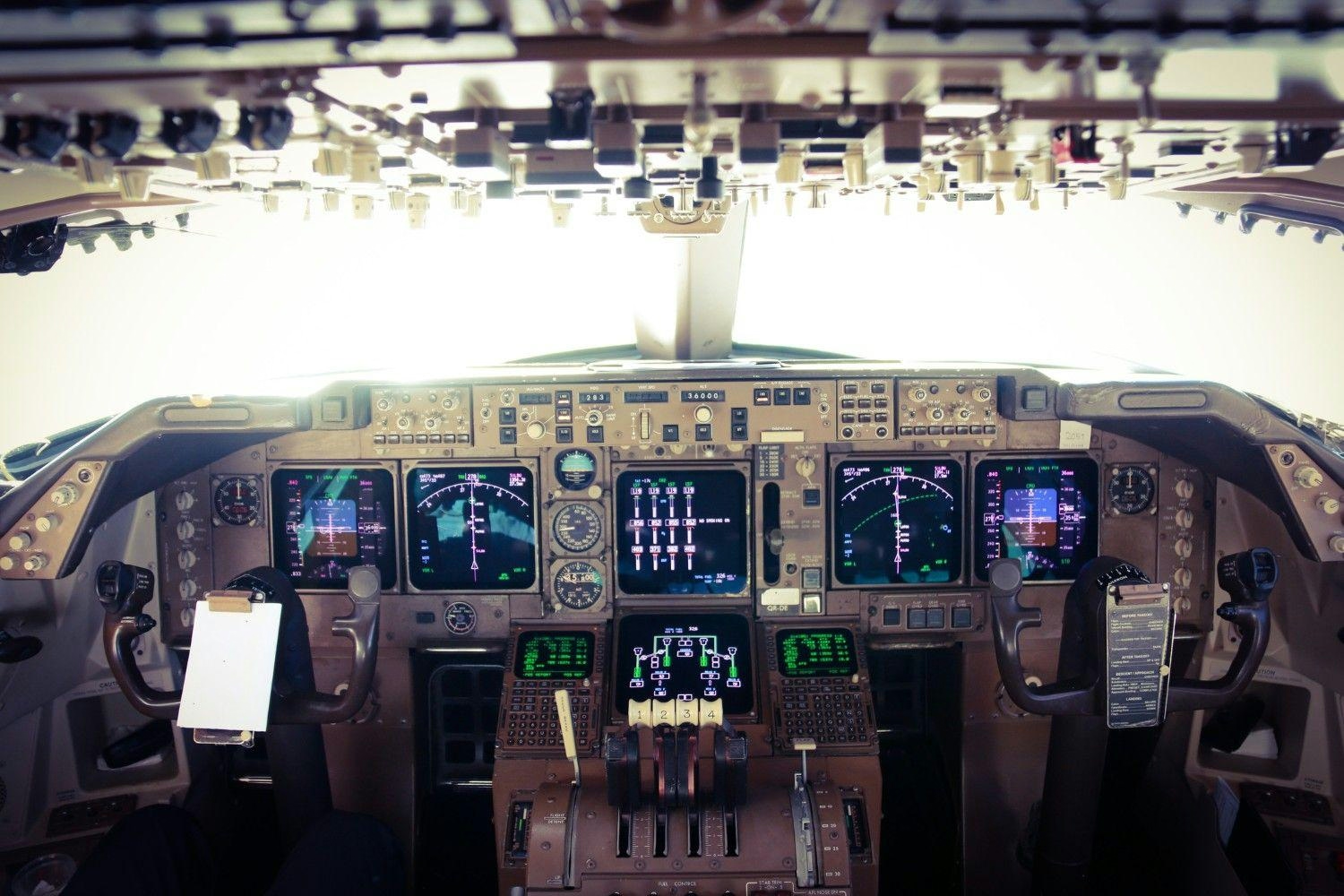
Air India Engine Shutdown: Pilots’ Body Explains FADEC Fuel Cut-Off Theory
Air India Engine Shutdown: Pilots’ Body Highlights FADEC Fuel Cut-Off Theory
Emerging Theories on Engine Failure
The Aircraft Accident Investigation Bureau (AAIB) has suggested that a possible fuel switch error may have caused the catastrophic engine failure on Air India Flight 171. However, new perspectives are focusing on the aircraft’s advanced electronic systems, particularly the Full Authority Digital Engine Control (FADEC), as a potential factor in the incident. Preliminary reports indicate that the crash was initiated by the sudden movement of fuel-control switches to the "cut-off" position, which resulted in both engines being starved of fuel. Cockpit voice recordings reveal that the captain may have cut the fuel flow while the first officer was at the controls. Despite these findings, the Federation of Indian Pilots (FIP) has urged caution against attributing blame to the crew based on early assumptions, emphasizing the need to consider all possible technical causes.
The Role of FADEC and Related Systems
At the heart of the latest theory is the FADEC system, often described as the "brain" of modern aircraft such as the Boeing 787. FADEC is responsible for monitoring and managing critical engine functions, including fuel flow and engine speed, and it has the capability to override pilot commands based on sensor inputs. This system operates in conjunction with the Electronic Engine Controller (EEC) and the Thrust Control Malfunction Accommodation (TCMA) systems. The FIP has raised concerns that a malfunction within these interconnected systems—potentially triggered by faulty sensor data—could have caused FADEC to shut down both engines without any manual input from the crew. This possibility challenges the initial narrative by suggesting that the engine failure may have led to an automatic movement of the fuel switches to the cut-off position, rather than a manual error by the pilots.
Expert Insights and Calls for Thorough Investigation
Aviation attorney Mary Schiavo, speaking to FinancialExpress.com, underscored concerns regarding the TCMA system, which informs FADEC whether the aircraft is on the ground or airborne. She referenced previous incidents, including a 2019 All Nippon Airways (ANA) Boeing 787 flight where FADEC triggered a dual engine shutdown due to erroneous sensor input. Schiavo also mentioned an ongoing investigation into a 2025 United Airlines 787 incident involving uncommanded dives, believed to be linked to software or computer malfunctions. In light of these concerns, the FIP has called for a comprehensive reassessment of the roles played by FADEC, EEC, and TCMA malfunctions in the Air India crash. The pilots’ association is urging investigators to meticulously analyze data from the Flight Data Recorder (FDR), Cockpit Voice Recorder (CVR), and relevant Boeing service bulletins before reaching any conclusions.
In response to the preliminary findings, India’s aviation regulator has mandated inspections of Boeing fuel switches across airline fleets. Meanwhile, families of the victims continue to seek detailed answers as the investigation unfolds. The FIP stresses the importance of a thorough and impartial inquiry, cautioning against premature judgments regarding crew actions until all technical possibilities have been fully examined.

YVR Advances Travel Experience with Digital Twins, AI, and Biometrics
YVR Advances Travel Experience with Digital Twins, AI, and Biometrics
Vancouver International Airport (YVR) is accelerating its digital transformation to enhance passenger experience and operational resilience by deploying advanced technologies such as digital twins, artificial intelligence (AI), and biometrics. Under the leadership of Albert Van Veen, Vice President of Innovation and Chief Information Officer, YVR is pursuing a data-driven strategy designed to streamline airport processes and improve decision-making across its operations.
Leadership Driving Innovation
Albert Van Veen, who joined YVR a year ago after senior roles at FastID and Amsterdam Airport Schiphol, is internationally recognized for his expertise in IT transformation and digital identity. He now spearheads YVR’s efforts to redefine the travel experience by integrating digital identity, biometrics, and AI-powered solutions. These initiatives aim to make travel faster, more efficient, and secure for passengers while enhancing the airport’s operational capabilities.
At the forthcoming FTE Global event in Long Beach, California, Van Veen will present how YVR is leveraging digital twins and AI to revolutionize airport operations. YVR has been a pioneer in deploying an operational digital twin—a virtual replica of airport systems—that optimizes passenger flow and drives innovation beyond traditional aviation boundaries. This digital twin integrates with core platforms such as Maximo, SITA, ADB Safegate, and Genetec, creating a comprehensive end-to-end airport flow solution.
Expanding AI and Industry Collaboration
YVR is also launching an AI Marketplace for aviation, a collaborative platform designed to enable airports of all sizes to access, adopt, and co-develop intelligent solutions. Van Veen emphasizes that the AI Marketplace is intended to support both major hubs and smaller regional airports, fostering industry-wide collaboration and accelerating the adoption of innovative technologies.
A central focus of YVR’s digital strategy is the ongoing integration of AI into its operations. The airport is developing modules that connect predictive analytics and intelligent traffic flow models to its digital twin, enhancing operational efficiency and responsiveness. However, these digital ambitions face challenges. Research from the University of Sharjah points to limitations in current digital twin models regarding the full utilization of renewable energy, which may affect sustainability objectives. Additionally, industry observers such as Skift have expressed skepticism about the broader impact of AI-powered digital twins, particularly in areas like airfares and loyalty programs.
Navigating a Competitive and Evolving Landscape
The competitive landscape in airport technology is rapidly evolving, with other airports and technology providers intensifying their digital and biometric offerings. For instance, Socure recently introduced a Workforce Verification solution aimed at combating employee fraud, reflecting a wider industry trend toward secure, automated identity verification. As biometric technologies advance, the imperative for robust security measures to counter increasingly sophisticated fraud schemes remains critical.
YVR’s commitment to digital innovation positions it at the forefront of the aviation industry’s transformation. Nevertheless, the airport’s journey will require continuous collaboration, adaptation, and vigilance as new challenges and opportunities arise in this dynamic environment.
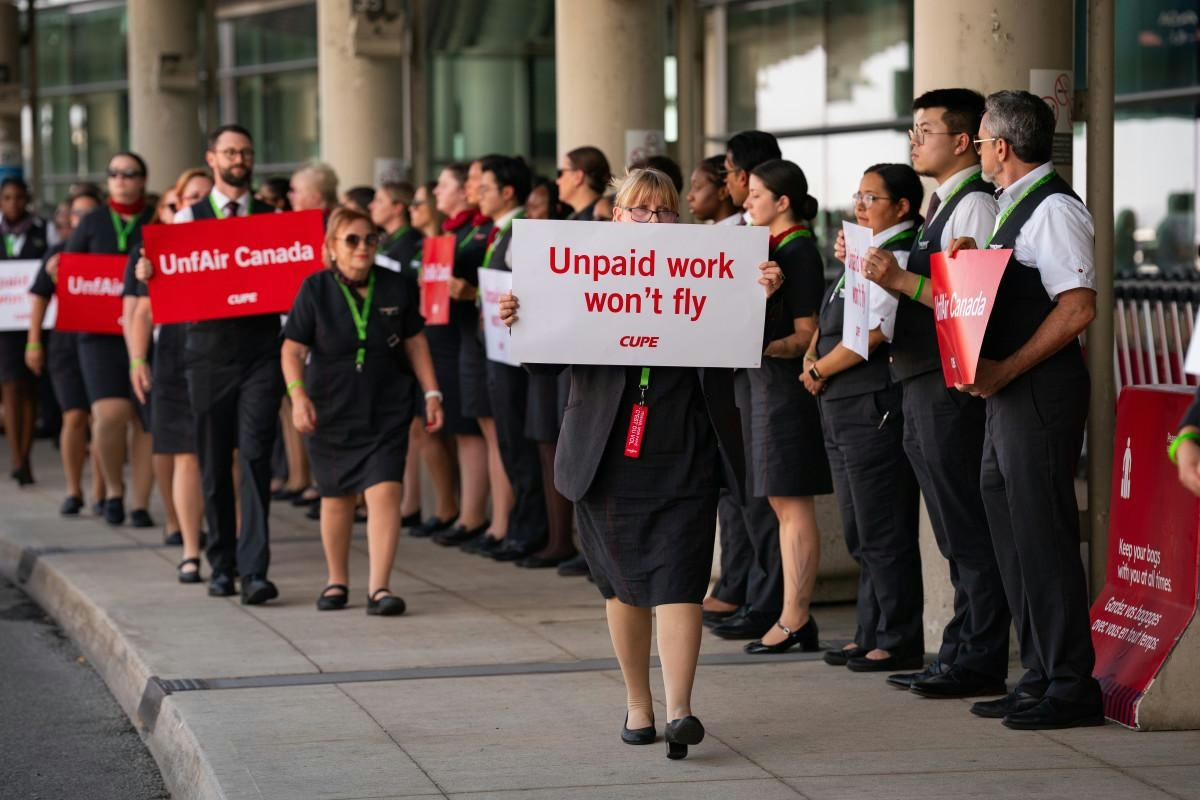
Air Canada to ground most flights amid looming flight attendant strike
Air Canada Grounds Majority of Flights Ahead of Potential Flight Attendant Strike
Air Canada has initiated the grounding of most of its flights in anticipation of a possible strike or lockout involving over 10,000 flight attendants. The airline announced a phased wind-down of its operations to be completed within three days, aiming to provide clarity to customers amid stalled labour negotiations. This move signals a significant disruption to air travel, particularly over the upcoming weekend.
Labour Dispute and Operational Impact
The Canadian Union of Public Employees (CUPE), representing Air Canada’s flight attendants, has indicated its intention to strike as early as Saturday, August 16. In response, Air Canada has prepared to lock out employees if no agreement is reached. This standoff is expected to result in the cancellation of the majority of Air Canada’s approximately 700 daily flights, with most services ceasing as early as Friday. The disruption threatens to affect around 100,000 passengers daily, including roughly 25,000 Canadians returning from international destinations who may face being stranded.
While mainline and leisure flights operated by Air Canada and its subsidiary Air Canada Rouge will largely be suspended, regional flights operated by partners Jazz and PAL are expected to continue. The strike could also impact cargo operations and have broader repercussions across the travel industry, including competitors. United Airlines, a codeshare partner, has issued a travel waiver to assist customers affected by the disruption.
Core Issues Behind the Dispute
The dispute centers on pay and working conditions. CUPE has rejected Air Canada’s latest proposals, including a new compensation package presented earlier in the week. The union contends that the airline’s offer to compensate for unpaid work is inadequate, providing only 50% of the hourly rate. CUPE further accuses Air Canada of refusing to raise flight attendant wages to align with industry standards, inflation, or even the federal minimum wage. According to the union, entry-level pay has increased by only CA$3 per hour since 2000, despite inflation rising by 69% over the same period.
Wesley Lesosky, President of the Air Canada Component of CUPE, emphasized the union’s position, stating, “For the past nine months, we have put forward solid, data-driven proposals on wages and unpaid work, all rooted in fairness and industry standards. Air Canada’s response to our proposals makes one thing clear: they are not interested in resolving these critical issues.”
Air Canada, meanwhile, asserts that it has made efforts to resolve the dispute, including requesting government-directed arbitration. CUPE has declined this approach, insisting that the company address its concerns directly rather than through arbitration.
With negotiations at an impasse, tens of thousands of passengers now face uncertainty and potential travel disruption as Air Canada proceeds with grounding most of its fleet in the coming days.
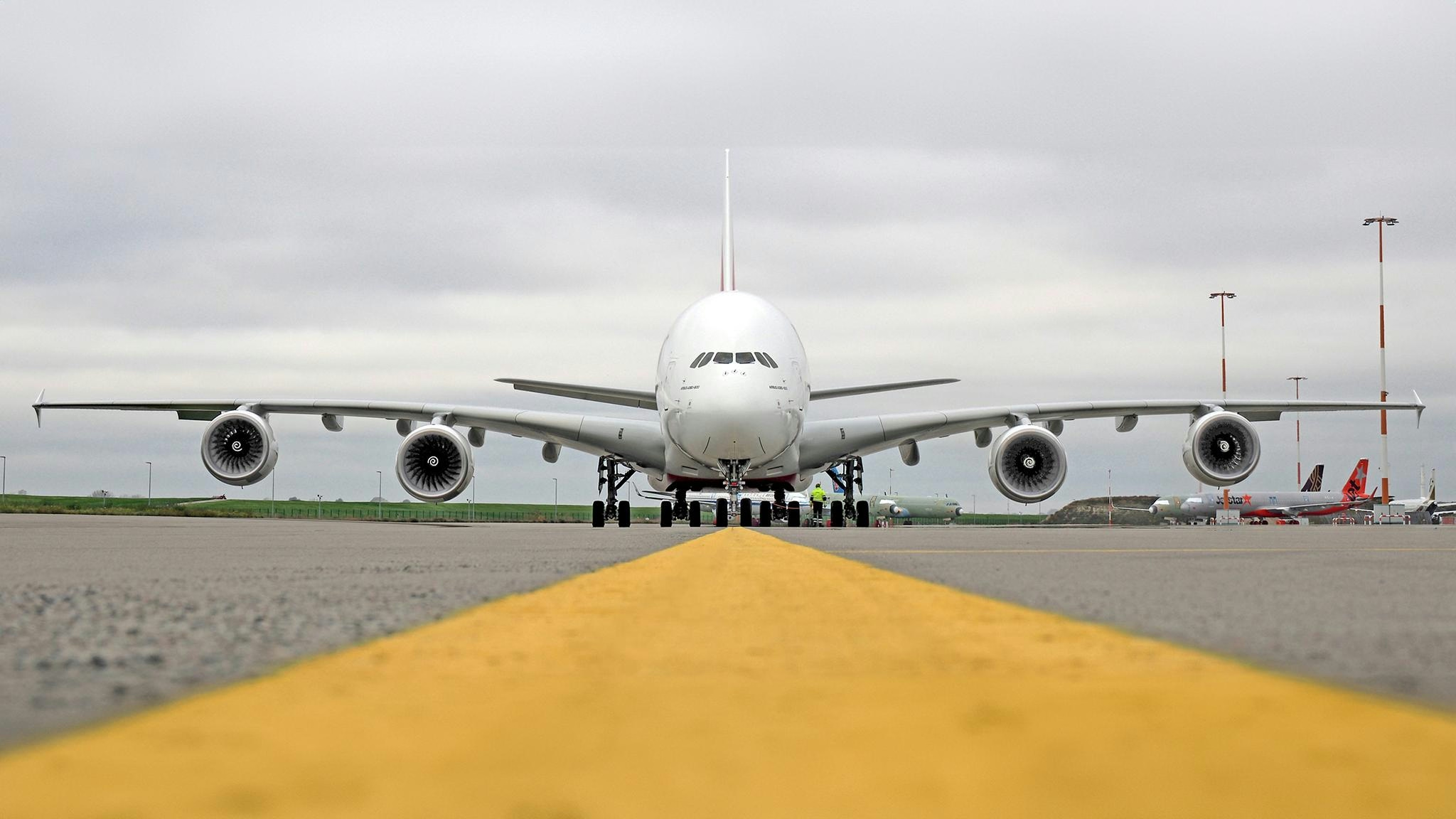
Why the World’s Best-Selling Widebody Passenger Aircraft Concerns Airbus
Why the World’s Best-Selling Widebody Passenger Aircraft Concerns Airbus
Since its introduction in 2011, the Boeing 787 has emerged as a defining commercial success for the American aerospace giant. Over the past fourteen years, the aircraft has transported more than one billion passengers, with the global fleet operating in excess of 2,100 flights daily. These remarkable figures not only underscore Boeing’s dominance in the widebody market but also present a growing challenge for its European competitor, Airbus.
The Boeing 787: A Market Leader
The Boeing 787 program, launched in 2004, was designed to build upon the legacy of the 777 by delivering a next-generation widebody aircraft. The 787 entered commercial service with All Nippon Airways (ANA) in October 2011, followed by the introduction of the larger 787-9 variant with Air New Zealand in 2014. Boeing has since developed three variants: the 787-8, measuring 186 feet with a typical seating capacity of 242 passengers and a range of 8,400 miles; the 787-9, at 206 feet, accommodating 296 passengers with an 8,705-mile range; and the 787-10, the largest at 224 feet, seating 318 passengers with a range of 7,285 miles.
ANA remains the largest operator with 86 Dreamliners, followed by United Airlines with 78 and American Airlines with 63. Globally, more than 1,175 Boeing 787s are currently in service, having completed nearly five million flights and accumulated over 30 million flight hours.
A Billion Passengers and Counting
The milestone of carrying over one billion passengers highlights the 787’s extensive global reach and operational reliability. Scott Stocker, Vice President and General Manager of the 787 Program, attributed this achievement to the confidence placed in the aircraft by airline customers and its capacity to connect people and cities across the world efficiently.
Airbus Faces Competitive Pressure
Boeing’s commanding position in the widebody segment extends beyond sheer numbers, signaling a shift in the competitive landscape. In June 2025, Boeing’s widebody deliveries surpassed those of Airbus, reflecting market preferences and Boeing’s strategic initiatives, including the success of models such as the A321LR. This momentum intensifies the pressure on Airbus to respond decisively, whether by enhancing its A350 lineup or by pursuing new markets and technological innovations to sustain its competitive advantage.
Shifting Supply Chains and Market Dynamics
The evolving competition is further shaped by transformations in the global supply chain. In India, companies like Jeh Aerospace are bolstering the commercial aircraft supply network, which could influence production rates and strategic planning for both Boeing and Airbus. As manufacturing capabilities expand in emerging markets, both manufacturers will likely need to adapt their strategies to maintain agility and competitiveness in a rapidly changing environment.
Looking Ahead
As the world’s best-selling widebody passenger aircraft, the Boeing 787 sets a formidable benchmark for Airbus and the wider industry. With Boeing’s delivery figures on the rise and supply chain dynamics in flux, Airbus faces increasing pressure to innovate and capture a larger share of the widebody market. The coming years will be pivotal as both manufacturers compete for leadership in an evolving aviation landscape.
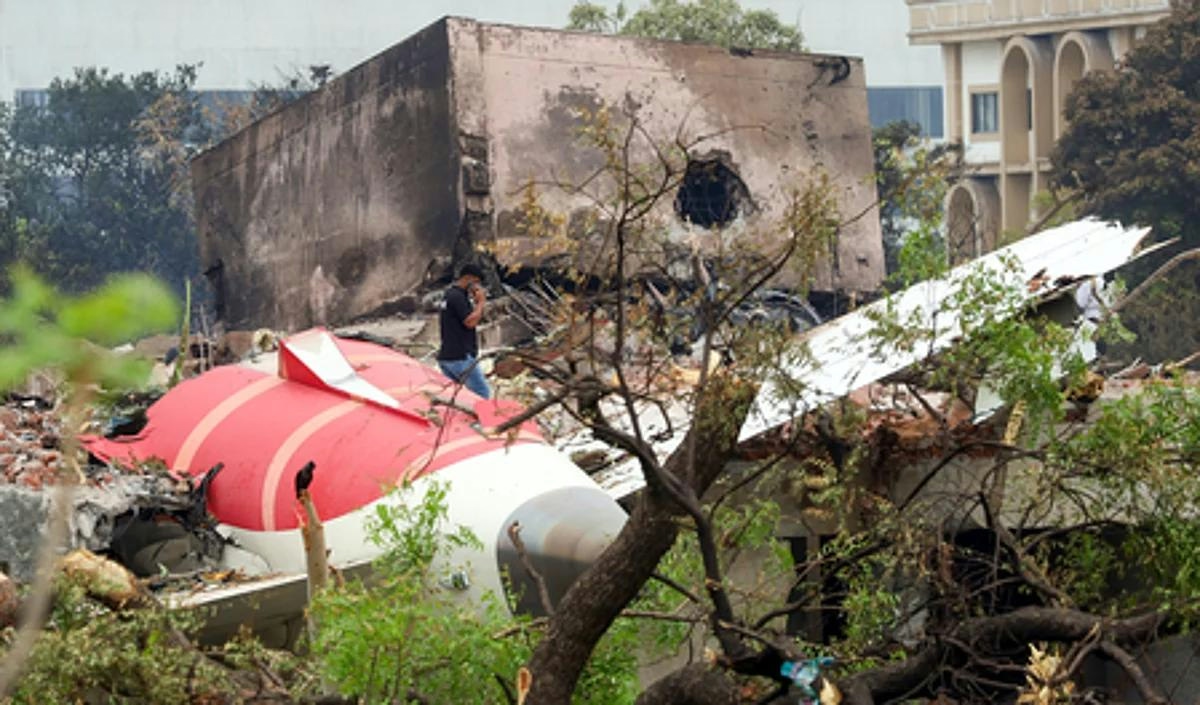
Call to Release Full Transcript of AI Flight 171 Audio Recording
Call for Full Disclosure of AI Flight 171 Cockpit Audio Transcript
The recent incident involving AI Flight 171 has ignited a contentious debate, particularly following strong objections from the Indian pilots’ association. The association criticized the preliminary report for what it described as unfair insinuations against the flight crew. Concurrently, certain Western media outlets have speculated about possible confusion in the cockpit, implying pilot error as a contributing factor. The Aircraft Accident Investigation Bureau (AAIB), in its initial findings, appeared to suggest this possibility but refrained from making explicit accusations. Notably, the AAIB’s report included only two paraphrased sentences from the pilots’ cockpit exchange, omitting the full audio transcript and raising significant concerns about transparency.
Unresolved Operational Details and Safety Concerns
Critical details surrounding the incident remain unclear. First officer Clive Kunder, aged 32, was at the controls during the event, with the pilot-in-command, Sumeet Sabharwal, 56, overseeing operations. It has not been established which pilot questioned the other regarding the shutdown of the fuel switches. The first fuel switch was turned off at 1:38:42 pm, but the crew took approximately ten seconds to reactivate it—a delay that has attracted scrutiny. Furthermore, the fuel supply to the second engine was restored four seconds after the first, rather than simultaneously. While the first engine responded promptly, the second continued to experience difficulties. These operational uncertainties are compounded by prior concerns raised by the US Federal Aviation Administration (FAA), which had flagged potential issues with Boeing’s fuel switch locking mechanism as early as 2018. The maintenance history of the fuel switches on this specific aircraft remains undisclosed.
Calls for Transparency Amid Ongoing Investigation
There is a growing demand for the AAIB to release the full transcript of the cockpit audio. Advocates argue that only complete transparency can dispel suspicions that the preliminary report was crafted to assign blame to the pilots, who tragically cannot defend themselves. Full disclosure is also seen as essential to provide some measure of closure to the victims’ families, even as the final investigation report may take up to a year to be completed.
However, the release of the full transcript presents challenges. The investigation remains active, and legal considerations may restrict the immediate publication of sensitive audio recordings. Beyond legalities, the aviation industry is closely monitoring Air India’s response, with heightened scrutiny on its operational protocols and safety standards. Rival airlines are reportedly reviewing their own safety procedures and may increase pressure on Air India to demonstrate full transparency.
At present, no definitive conclusions have been drawn regarding the cause of the crash. The insistence on releasing the full cockpit transcript highlights the broader imperative for openness and accountability, both to ensure a fair investigation and to restore public confidence in aviation safety.

Gulfstream Opens Technical Training Center in Mesa
Gulfstream Opens Technical Training Center in Mesa Amid Industry Expansion
Gulfstream Aerospace Corporation has officially opened its newest Technical Training Center (TTC) in Mesa, Arizona, reinforcing its commitment to workforce development amid a rapidly evolving business aviation sector. This facility, Gulfstream’s second TTC following the original center established in Savannah in 2015, occupies more than 10,000 square feet and combines classroom instruction with practical laboratory environments to enhance technical training.
Advanced Training Facilities and Workforce Development
The Mesa center is equipped with a range of sophisticated training assets, including a Gulfstream G650 fuselage segment and empennage assembly, a G700 engine, a G600 simulator, and a G200 aircraft. These resources enable comprehensive instruction in critical areas such as sheet metal fabrication, avionics, mechanical maintenance, and safety protocols. Training sessions are conducted by Gulfstream’s own instructors and cater to both newly recruited technicians and seasoned professionals seeking to refine their skills.
Lor Izzard, Senior Vice President of Gulfstream Customer Support, emphasized the strategic importance of the new center, stating that investing in workforce development ensures the company continues to deliver industry-leading customer support. The Mesa TTC is designed to provide employees with expanded opportunities to enhance their expertise, thereby maintaining Gulfstream’s reputation for high-quality service.
Integration with Regional Operations and Educational Partnerships
The Mesa TTC complements Gulfstream’s recently inaugurated maintenance, repair, and overhaul (MRO) facility at Mesa Gateway Airport, which has already created over 300 jobs in the area. Many of the new hires at the MRO facility are expected to undergo onboarding and skills training at the TTC, fostering a seamless integration between training and operational readiness.
In addition to internal training efforts, Gulfstream has established a partnership with Chandler-Gilbert Community College to support the development of future aviation technicians. Students enrolled in the college’s airframe and powerplant (A&P) maintenance technology programs receive Gulfstream-led training at the Mesa TTC alongside their academic coursework. This collaboration has proven effective, with Gulfstream hiring 40 graduates from the program to date, thereby strengthening the pipeline of qualified technicians.
Navigating a Competitive Business Aviation Landscape
The launch of the Mesa Technical Training Center occurs against a backdrop of intensifying competition within the business aviation industry. Competitors such as Bombardier are expanding their footprint, particularly in emerging markets like South America. The sector’s competitive dynamics have also attracted increased attention from financiers, with companies like JetLoan reporting a robust market resurgence and originating $110 million in financing during recent quarters.
Gulfstream’s investment in workforce training and development signals a strategic effort to maintain its competitive advantage. As rivals potentially enhance their own training programs and service offerings, Gulfstream’s initiative highlights the company’s dedication to cultivating a highly skilled workforce capable of supporting its growing global operations in a challenging market environment.

Ethiopian Airlines and AfDB Launch $10 Billion Airport Project
Ethiopian Airlines and AfDB Announce $10 Billion Bishoftu International Airport Project
Ethiopia has announced an ambitious plan to develop the Bishoftu International Airport (BIA), a $10 billion project intended to establish one of the world’s largest aviation hubs. The African Development Bank (AfDB) will lead the financing efforts, aiming to mobilize nearly $8 billion and providing an initial $500 million loan, subject to Board approval.
The agreement was formalized through a mandate letter signed by Ethiopian Airlines Group Chief Commercial Officer Lemma Yadecha and AfDB President Dr. Akinwumi Adesina. Ethiopia’s Finance Minister Ahmed Shide was present at the signing ceremony, alongside senior officials from Malawi, South Sudan, the Democratic Republic of Congo, Togo, and Zambia.
Project Scope and Strategic Importance
Situated 40 kilometers south of Addis Ababa, Bishoftu International Airport is designed to initially handle 60 million passengers annually, with plans to expand capacity to 110 million in the future. The airport will also accommodate up to 3.73 million tonnes of cargo each year. The development includes an integrated airport city featuring hotels, shopping malls, leisure facilities, and direct rail and expressway connections to the capital.
Dr. Akinwumi Adesina praised Ethiopian Airlines as “Africa’s oldest and best airline,” underscoring its pivotal role in regional integration. He highlighted that the new airport would significantly enhance the airline’s operational and fleet capacity while reinforcing Africa’s position in global aviation. Adesina also commended Prime Minister Abiy Ahmed for Ethiopia’s rapid transformation.
Ethiopian Airlines CEO Mesfin Tasew described the agreement as “a decisive step” toward establishing a pan-African gateway. The project is expected to stimulate intra-African trade, tourism, and connectivity, positioning Ethiopia as a central hub in the continent’s aviation landscape.
Challenges and Market Implications
Despite its promise, the project faces considerable challenges. Securing the full $10 billion will require extensive fundraising beyond the AfDB’s initial commitment. The initiative must also overcome complex regulatory and logistical obstacles while adhering to a tight schedule, with groundwork slated to begin in late 2025 and Phase I targeted for completion by November 2029.
Market reactions have been largely positive, with expectations that the project will attract increased investor interest in Ethiopian infrastructure. However, regional competitors may respond by upgrading their own hubs or enhancing operational efficiencies to maintain market share.
The AfDB brings a strong track record in infrastructure financing, having invested over $55 billion in the past decade. The Bank previously supported Ethiopian Airlines with a $160 million loan in 2016 and has backed major projects across Africa, including wind power initiatives in Ethiopia and regional railway developments.
Bishoftu International Airport will complement Addis Ababa’s Bole International Airport, which will continue to serve domestic flights. Together, these facilities are poised to reinforce Ethiopia’s status as a key aviation hub for Africa and beyond.
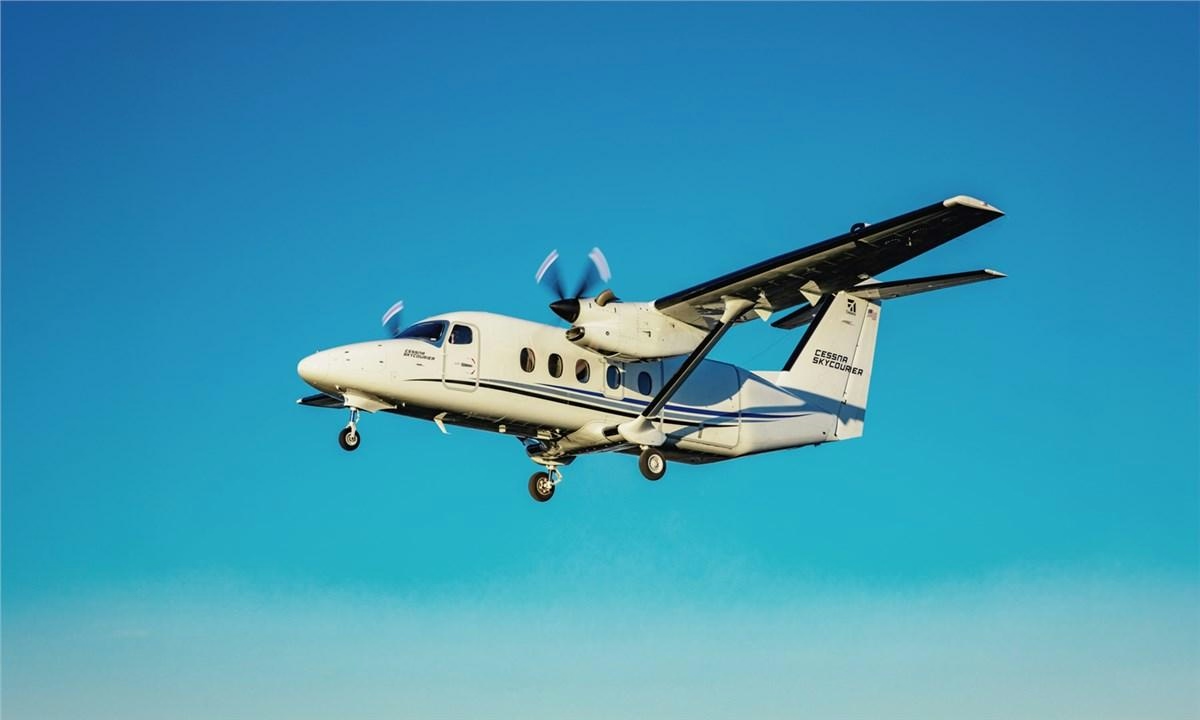
Hunnu Air Introduces Cessna SkyCourier to Mongolia
Hunnu Air Introduces Cessna SkyCourier to Mongolia
Hunnu Air is poised to become the first Mongolian airline to operate the Cessna SkyCourier, marking a notable advancement in the nation’s aviation industry. The charter operator has placed an order for two passenger variants of the twin-engine turboprop, alongside one Cessna Grand Caravan EX, with deliveries scheduled to commence in 2026.
Enhancing Domestic Connectivity and Tourism
Manufactured by Textron Aviation Inc., the Cessna SkyCourier is acclaimed for its versatility and robust performance, making it well-suited for a variety of roles including air freight, charter services, and special operations. Its design aligns closely with Mongolia’s vast and often challenging terrain, where dependable and adaptable aircraft are essential for transporting both passengers and cargo. The introduction of the SkyCourier is expected to strengthen Hunnu Air’s domestic tourism and cargo operations, facilitating improved access to remote regions and supporting the airline’s broader mission to enhance connectivity across the country. Since its founding in 2011, Hunnu Air has grown to become Mongolia’s second-largest airline, playing a pivotal role in expanding both domestic and international air links.
Operational and Market Challenges
Despite the promising prospects, integrating the SkyCourier into Mongolia’s aviation landscape presents several challenges. Hunnu Air must secure regulatory approvals tailored to the Mongolian market and ensure the aircraft’s performance is compatible with the country’s diverse and often harsh weather conditions. Additionally, logistical factors such as establishing maintenance infrastructure and ensuring the availability of spare parts will be critical to the successful deployment of the new fleet.
The airline’s fleet expansion is likely to provoke competitive responses from regional cargo carriers, who may adjust pricing or upgrade their own aircraft to maintain market share. This development is also expected to stimulate broader industry discussions regarding the future of next-generation regional airliners, as analysts evaluate how models like the SkyCourier could influence the evolution of regional aviation.
Global Context and Future Prospects
Internationally, the SkyCourier continues to gain momentum. Recent milestones include the first delivery to Air Bravo Corporation in Canada and the certification and delivery of a Combi configuration aircraft in Brazil, highlighting the model’s growing acceptance and adaptability across diverse markets.
For Hunnu Air, the arrival of the SkyCourier offers an opportunity to enhance VIP services and improve connectivity to Mongolia’s scenic destinations, thereby supporting economic growth through tourism and transportation. The airline’s success in integrating the aircraft will depend on its ability to navigate operational challenges and respond effectively to a dynamic competitive environment, while capitalizing on the SkyCourier’s proven reliability in demanding conditions.

KF Aerospace Powers Up Airline Expansion in 2025 with Major Maintenance and Fleet Integration Deals
KF Aerospace Powers Up Airline Expansion in 2025 with Major Maintenance and Fleet Integration Deals
KF Aerospace is poised for substantial growth in 2025, reinforcing its status as a key player in Canada’s aviation maintenance, repair, and overhaul (MRO) industry. The company is intensifying its collaborations with prominent commercial and domestic airlines while expanding its operational footprint across major Canadian airports. This strategic expansion is driven by rising industry demand and a commitment to delivering customized, high-quality maintenance solutions for the nation’s largest carriers.
Strengthening Airline Partnerships
In 2025, KF Aerospace has significantly broadened its partnerships with leading Canadian airlines, including Air Canada, Flair Airlines, and WestJet. These new agreements demonstrate the company’s adaptability to evolving maintenance strategies within the domestic aviation sector.
For Air Canada, KF Aerospace has extended its services beyond routine inspections to encompass comprehensive support, now incorporating advanced X-ray inspections and engine servicing for the Airbus A320 fleet. This development highlights KF’s capability to provide end-to-end MRO solutions across a diverse range of aircraft types. In the case of WestJet, following the integration of Sunwing Airlines and Swoop, KF Aerospace is spearheading the standardization of interiors and systems across the combined fleet. This complex initiative is essential for operational efficiency, ensuring that each aircraft complies with WestJet’s rigorous standards while minimizing disruption to daily operations. Meanwhile, KF Aerospace has secured maintenance contracts tailored to Flair Airlines’ operational schedules, supporting the carrier’s dedication to safe and reliable service for Canadian travelers. Collectively, these partnerships reinforce KF Aerospace’s reputation as a trusted partner for airlines focused on fleet care and modernization.
Expanding Airport Operations and Capabilities
KF Aerospace continues to invest heavily in its established Canadian airport locations. Kelowna International Airport (YLW) remains the company’s largest hub, employing 775 staff and offering a comprehensive suite of services including maintenance, fleet leasing, charter operations, and extensive training programs for pilots and technicians. Capital investments at YLW are ongoing, aimed at expanding hangar capacity and introducing next-generation training devices to enhance operational readiness.
Hamilton International Airport (YHM), with a workforce of 221 employees, serves as KF’s second-largest site. It provides line and heavy maintenance, component overhaul, and supply chain management services. Plans are in place to further develop YHM’s capabilities by enhancing line and base checks and accelerating quick-turn services. These expansions are designed to meet the demands of a growing fleet and increasingly stringent service level agreements across North America.
Navigating Growth Amid Industry Challenges
As KF Aerospace scales its operations to accommodate increased demand from new contracts with Air Canada, Flair Airlines, and WestJet, it faces challenges related to expanding maintenance capacity, integrating new technologies, and implementing workforce training programs. Ensuring seamless integration and overcoming implementation hurdles remain top priorities for the company.
The competitive landscape is intensifying, with other MRO providers such as Vietjet Airlines expanding their own fleets and maintenance capabilities in pursuit of greater market share. Industry analysts are closely monitoring KF Aerospace’s ability to sustain service quality and operational efficiency amid rapid growth. Forecasts, including Parker’s projection of an 8% increase in the aerospace segment by fiscal 2026, indicate a robust and competitive environment. To maintain its leading position, KF Aerospace must continue to innovate and adapt, securing its role as an indispensable partner for Canada’s foremost airlines while navigating the complexities of expansion and heightened competition.
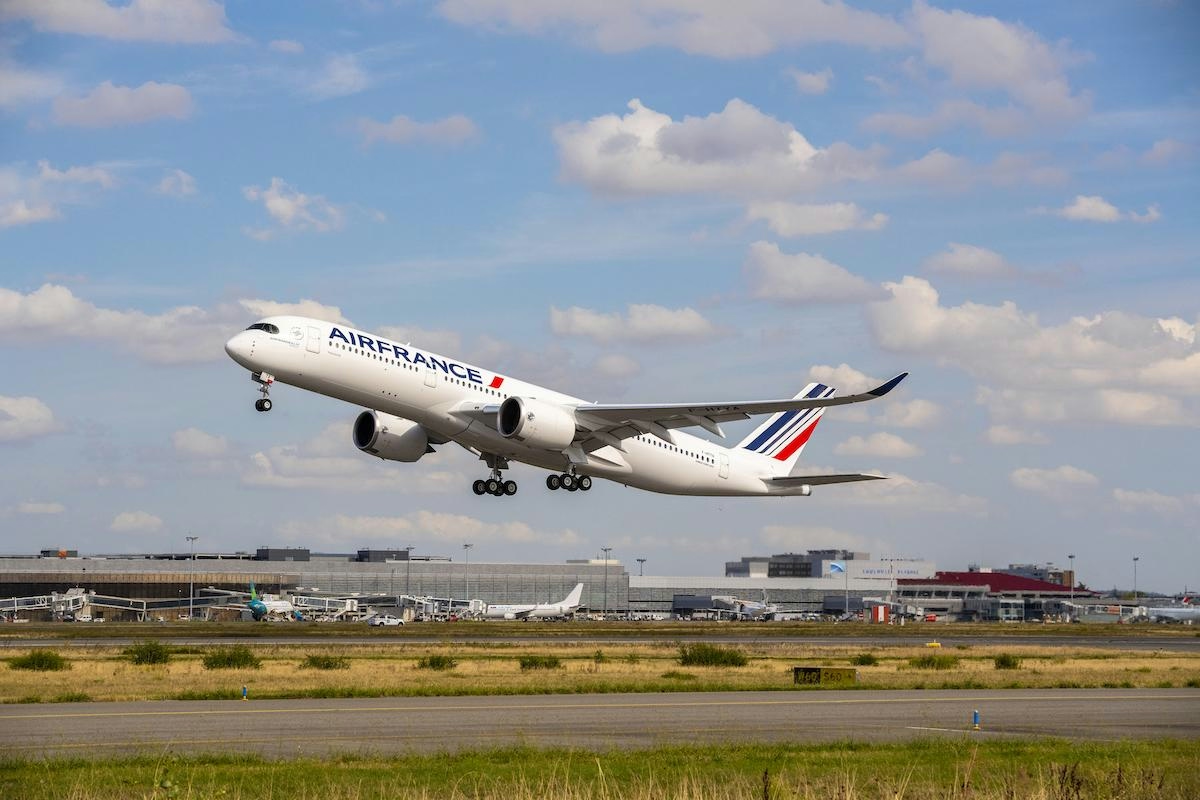
Air France-KLM Reduces Airbus A350-1000 Orders, Increases A350-900 Purchases
Air France-KLM Revises Airbus A350 Orders, Prioritizes A350-900 Over A350-1000
Air France-KLM is adjusting its widebody fleet strategy by converting a significant portion of its Airbus A350-1000 orders to the smaller A350-900 model, according to the latest data from Airbus’ order backlog. Initially, the Franco-Dutch airline group placed an order in 2023 for 50 A350 aircraft, consisting of 39 A350-900s and 11 A350-1000s. The recent revision involves converting eight of the A350-1000 orders into A350-900s. This strategic shift, first reported by FlightGlobal, comes two years after the original purchase and reflects a broader industry trend favoring more efficient and flexible aircraft.
Strategic Shift Toward Efficiency and Range
Air France-KLM’s decision highlights a preference for smaller-capacity aircraft with extended range capabilities. The A350-900 typically accommodates between 332 and 352 passengers in a three-class configuration and can operate nonstop for up to 9,700 nautical miles (18,000 kilometers). This makes it well-suited for a diverse range of routes, from short-haul to ultra-long-haul. In comparison, the larger A350-1000 seats between 375 and 400 passengers and offers approximately 40% more premium seating, but with a slightly reduced maximum range of 8,000 nautical miles.
Currently, Air France operates a fleet of 39 A350-900s, with an average aircraft age of 2.8 years. These aircraft are configured to carry 324 passengers, divided into 34 business class, 24 premium economy, and 266 economy seats. In preparation for KLM’s planned introduction of the A350 between 2026 and 2027, KLM pilots are undergoing training on Air France’s A350s as part of a pilot-sharing arrangement within the group.
Fleet Renewal and Environmental Objectives
The incoming A350s are intended to replace aging Airbus A330s and Boeing 777s across both Air France and KLM. Air France’s current widebody fleet includes 10 A330-200s with an average age of 22.6 years, alongside 62 Boeing 777s. KLM operates 11 A330s and 31 Boeing 777s. Benjamin Smith, CEO of Air France-KLM, has emphasized the A350’s advantages, including quieter operation, enhanced fuel efficiency, and lower operating costs compared to previous-generation aircraft. These attributes align with the group’s environmental commitments and economic goals.
Industry Implications and Market Response
Air France-KLM’s move away from the larger A350-1000 model may pose challenges for Airbus’s supply chain and could lead to discussions regarding production adjustments. The decision is likely to attract attention from industry analysts, as it signals a strategic pivot toward more versatile and efficient aircraft amid evolving market dynamics. Competitors such as Lufthansa and International Airlines Group (IAG) may reevaluate their own long-range fleet strategies in response, potentially influencing broader trends in aircraft procurement.
This development also raises important questions about the future viability of ultra-long-haul flights and the economic sustainability of larger aircraft in a market increasingly focused on operational flexibility and efficiency. Airlines continue to balance capacity and range considerations as they adapt to shifting passenger demand and operational realities.
Airbus Deliveries and Market Demand
Despite these shifts in airline preferences, Airbus reported delivering 67 aircraft to 41 customers in July 2025, underscoring sustained demand for new-generation widebody aircraft. Air France-KLM has yet to provide an official comment regarding the recent changes to its A350 order book.

Hawaiian Airlines Suspends Three Routes Amid Network Restructuring
Hawaiian Airlines Suspends Three Routes Amid Network Restructuring
Hawaiian Airlines has announced a significant restructuring of its transpacific network, effective from November. The carrier will suspend three underperforming routes—Honolulu to Incheon, South Korea; Fukuoka, Japan; and Boston—while reallocating aircraft to routes with stronger demand. This strategic shift aims to optimize capacity by enhancing service on key connections such as Honolulu to Sydney, Papeete, Los Angeles, and Seattle, alongside bolstering inter-island flights within Hawai‘i.
Route Suspensions and Capacity Reallocation
The airline will cease operations on the Honolulu–Incheon route, which currently operates five weekly flights, the Honolulu–Fukuoka route with three weekly flights, and the Honolulu–Boston route with four weekly flights. CEO Joe Sprague acknowledged the difficulty of discontinuing the Seoul service, a market Hawaiian has served for over 14 years. He attributed the decision to persistently weak post-pandemic demand from Asia and ongoing challenges in all three affected markets.
Despite these suspensions, Hawaiian Airlines reaffirmed its commitment to the Asian market. The airline will maintain nonstop flights to Japan and provide one-stop connections via Incheon through partner carriers, including members of the oneworld alliance. To compensate for the suspended routes, Hawaiian will introduce a new nonstop Seattle–Incheon service operating five times weekly starting September 12.
Expanded Services on High-Demand Routes
The restructuring will see increased frequencies on several popular routes. Between December 18 and January 31, daily service between Honolulu and Sydney will replace the current five weekly flights. The Honolulu–Papeete route will expand to two weekly flights beginning in March. During peak travel periods from November 21 to December 1 and December 19 to January 6, a fifth daily flight will be added between Honolulu and Los Angeles. Additionally, the Honolulu–Seattle route will increase to four daily flights from late November through mid-April.
Passengers affected by the route suspensions will have alternative travel options. Those traveling to Incheon or Fukuoka can connect via Hawaiian’s twice-daily Honolulu–Haneda and daily Osaka flights or through partner airlines. Travelers bound for Boston may connect through Alaska Airlines via Seattle, Portland, San Francisco, or San Diego.
The final flights on the suspended routes will operate on November 19 for Fukuoka and Boston, and November 21 for Incheon.
Implications for Hawaiian Airlines and the Market
This network realignment reflects Hawaiian Airlines’ strategy to concentrate resources on routes with robust international and domestic demand, thereby maximizing operational efficiency. However, the suspension of these services may pose challenges, including potential customer dissatisfaction and increased competition. Rival carriers might respond by adjusting their own route networks or pricing, potentially altering market dynamics. These developments could influence passenger booking patterns and have financial repercussions for Hawaiian Airlines.
For ongoing updates on Hawaiian Airlines’ network changes and industry responses, refer to recent analyses from Aviation Week Network and the Financial Times.
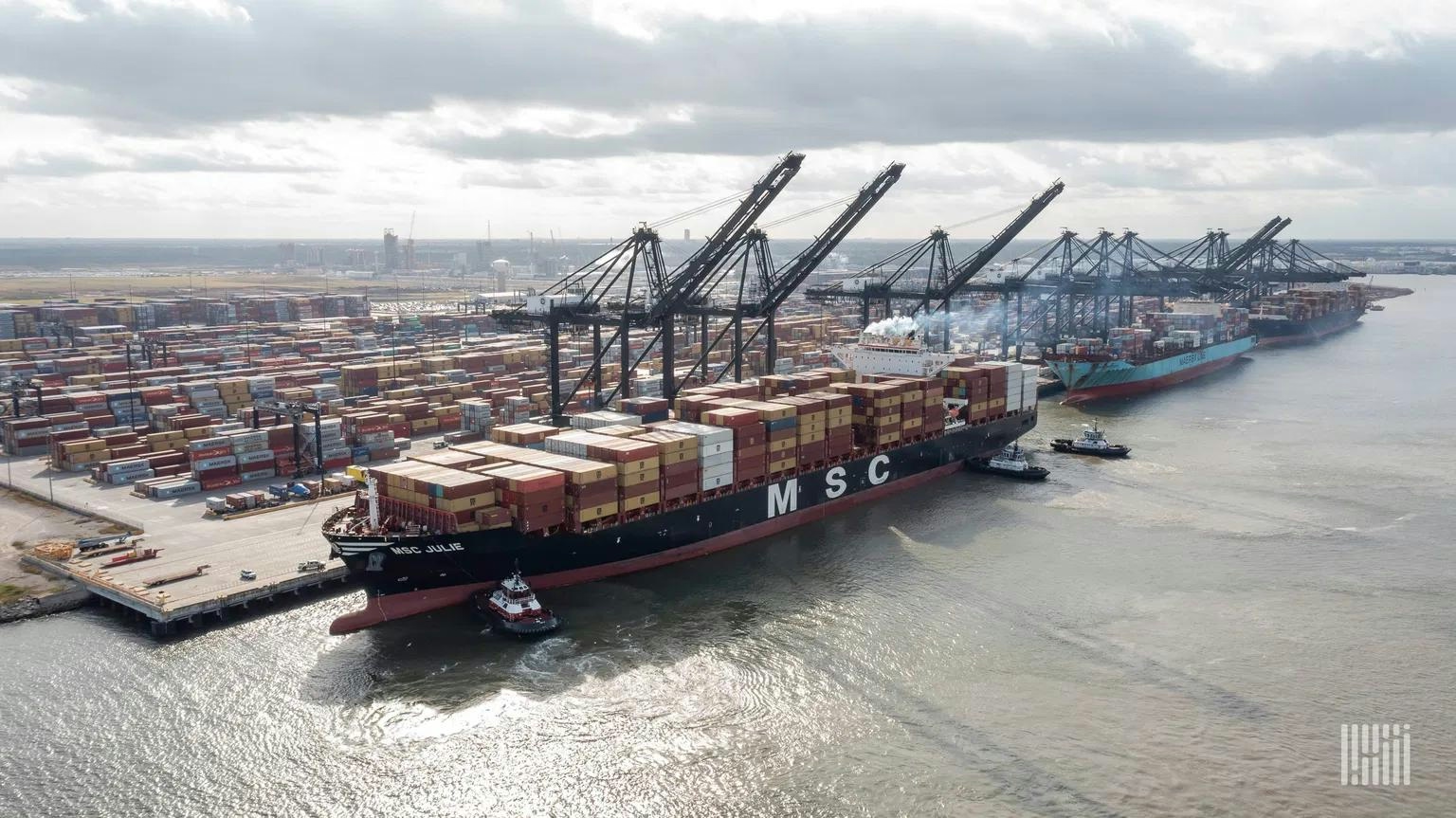
Treasury Explains Exemption of 8% Service Tax on Aircraft and Ship Leasing
Treasury Clarifies Exemption of 8% Service Tax on Aircraft and Ship Leasing
The Malaysian Treasury has issued a detailed explanation regarding its recent decision to exempt aircraft and ship leasing from the 8% service tax imposed on commercial rental and leasing services. This exemption underscores the government’s recognition of the pivotal role that the aviation and maritime sectors play in the country’s supply chain, tourism industry, and overall economic framework.
Rationale Behind the Exemption
In its official statement, the Treasury emphasized that the exemption is intended to discourage aircraft and ship owners from registering their assets abroad, a practice that could potentially erode domestic economic activity and reduce tourism inflows. The ministry highlighted that neighboring countries do not levy similar service taxes on these leasing services, which could otherwise incentivize customers to seek leasing arrangements outside Malaysia. The exemption is therefore a strategic measure to maintain the nation’s competitiveness in these critical sectors.
The Treasury clarified that this tax relief is exclusively applicable to the aviation and maritime industries, which are integral to Malaysia’s economic growth. It explicitly excludes other rental services such as vehicle leasing—including cars and buses—and business premises, which differ fundamentally in their operational use and economic impact.
Implementation and Compliance
The 8% service tax on rental and leasing services came into effect on July 1 and applies to service providers with annual rental or lease income exceeding RM1 million. Micro, small, and medium-sized enterprises (MSMEs) with annual sales below RM500,000 remain exempt from this tax. Addressing concerns about the transparency of the exemption’s introduction, the Treasury refuted claims of a discreet rollout, noting that an official notification was published on the customs department’s MySST portal on July 24.
While the exemption aims to bolster Malaysia’s position in the regional aviation and maritime markets, it also presents challenges for industry participants. Companies must carefully navigate the complexities of tax law implementation and ensure full compliance with the updated regulations. The exemption may lead to shifts in leasing strategies and alter competitive dynamics, as businesses adjust pricing models or explore new market opportunities.
Market Response and Outlook
Early market reactions indicate a positive response to the exemption. A recent survey conducted by the International Aircraft Dealers Association reported increased market confidence, suggesting that the tax relief could enhance broader market sentiment. Nonetheless, both the Treasury and industry stakeholders acknowledge the need for ongoing monitoring to assess the exemption’s impact and to ensure that it delivers the intended economic benefits without unintended adverse effects.
The Treasury reaffirmed that the exemption is a targeted and strategic initiative designed to support sectors vital to Malaysia’s economic resilience and sustained growth.
Ask AeroGenie